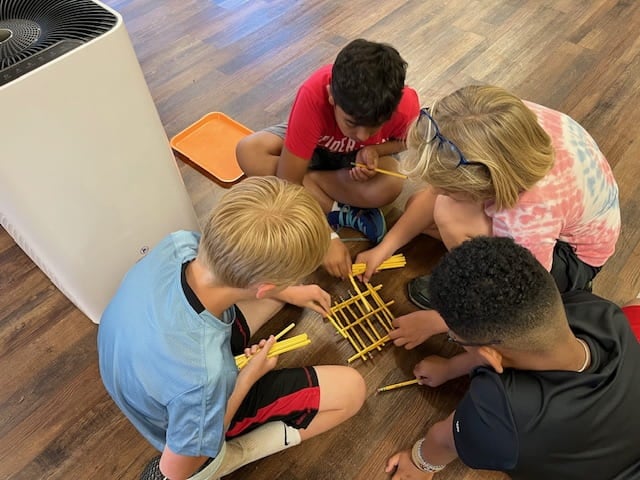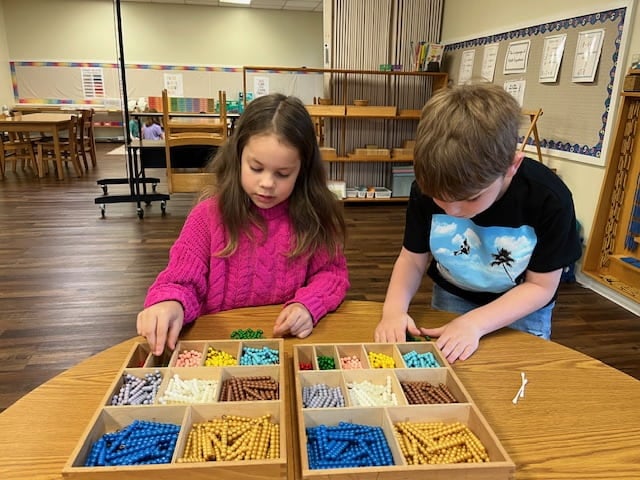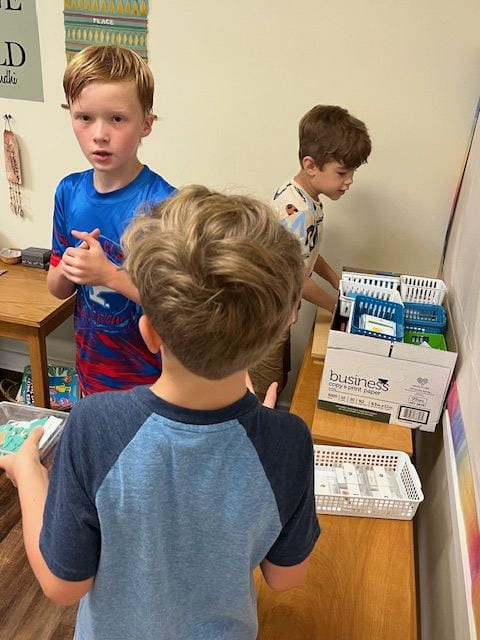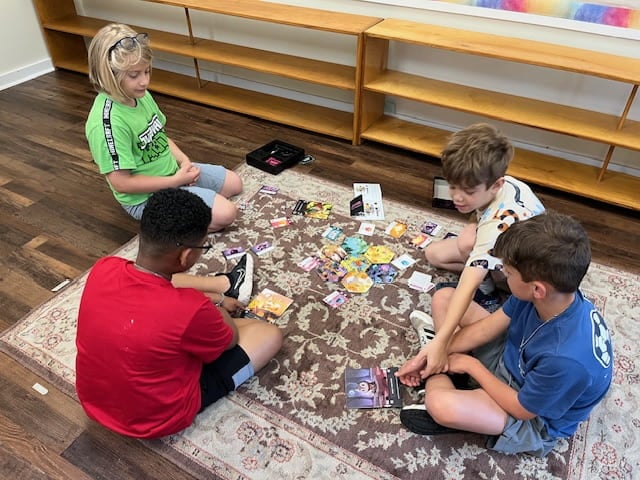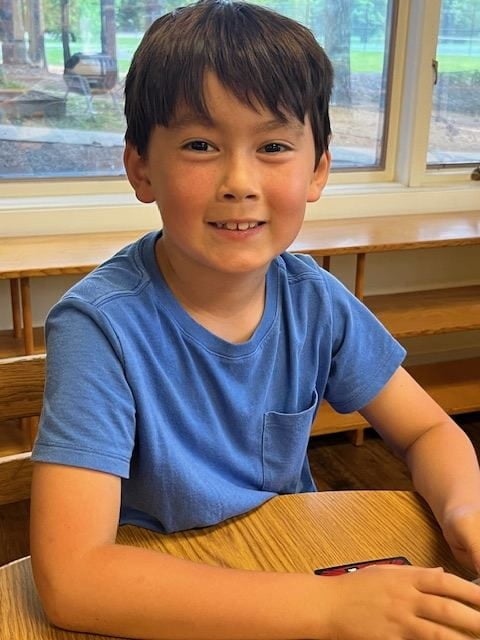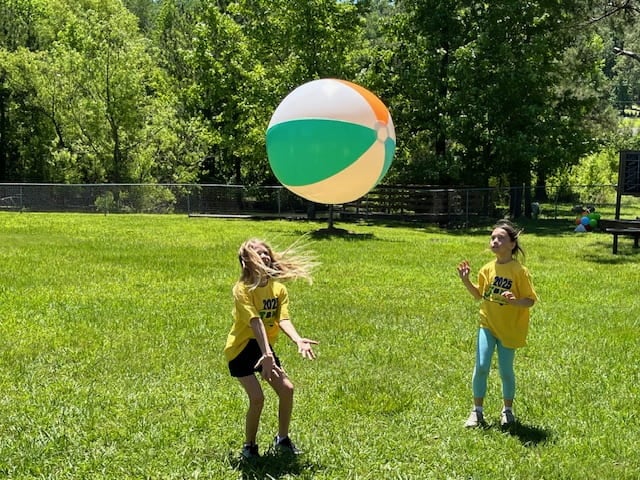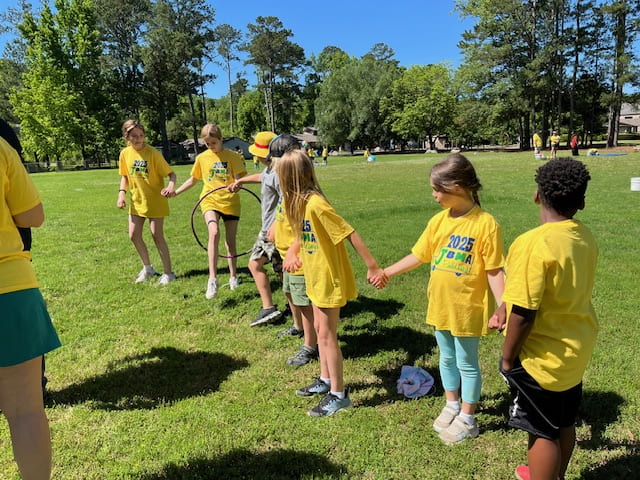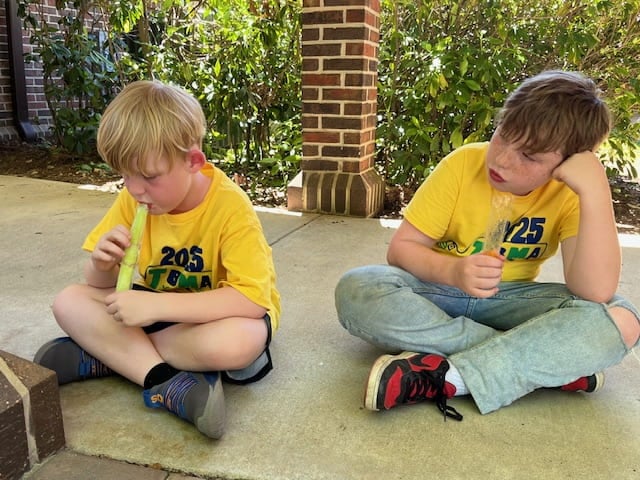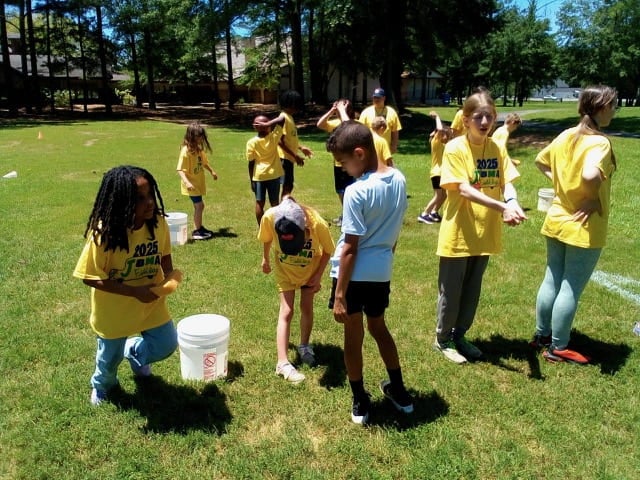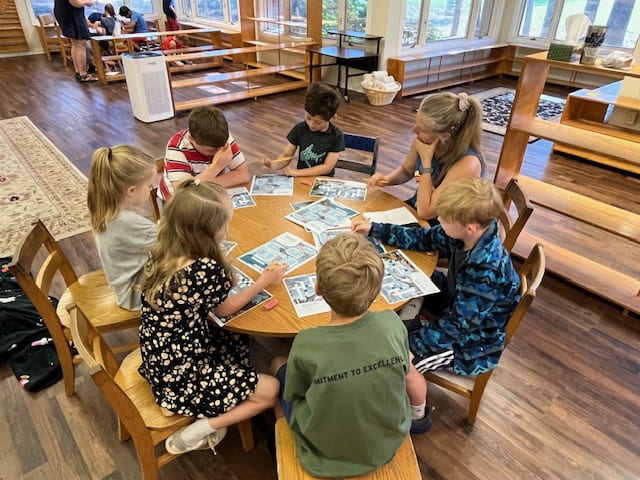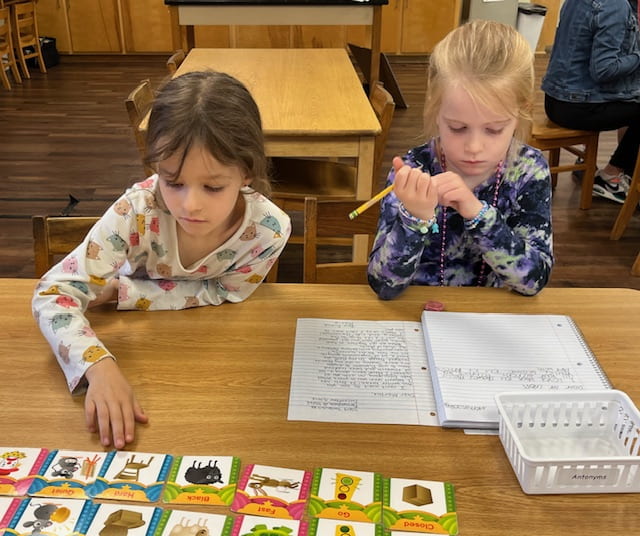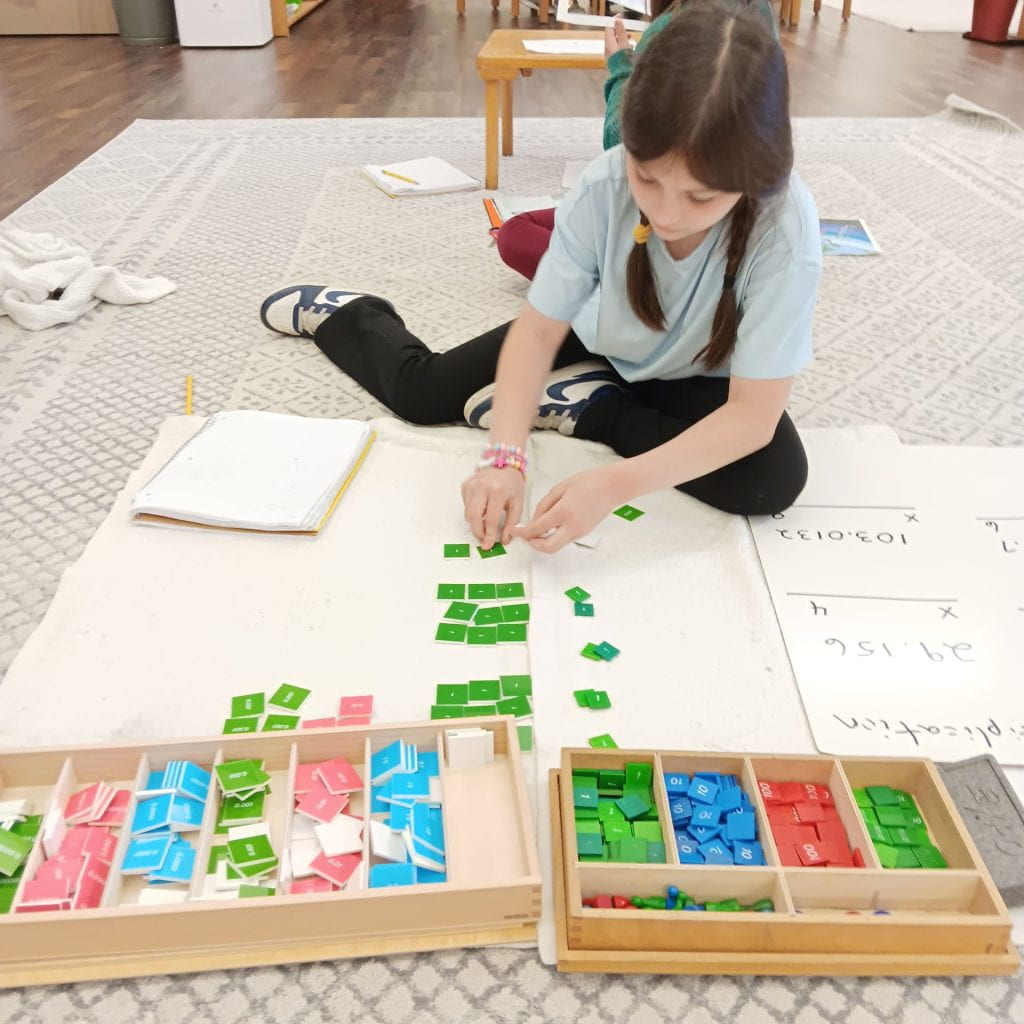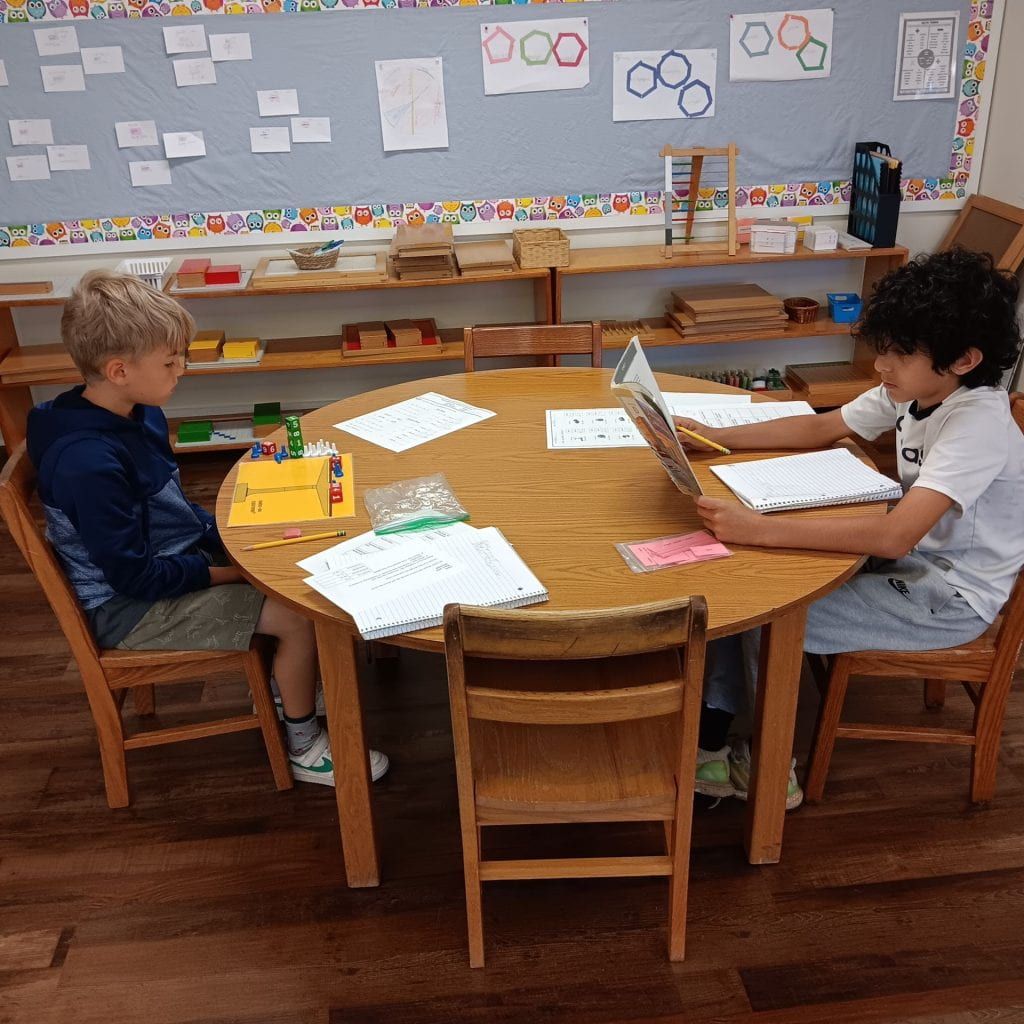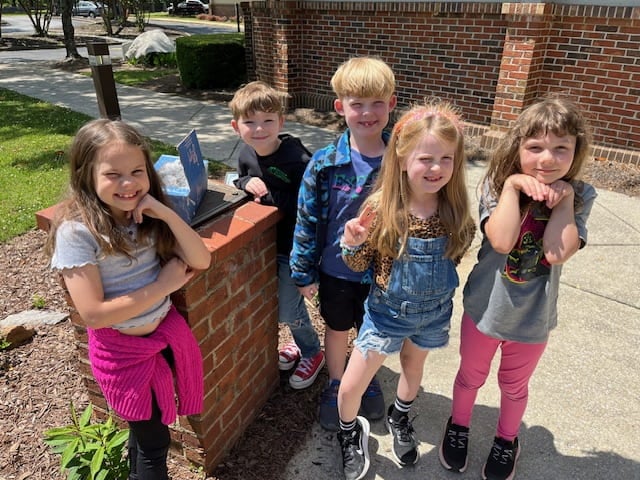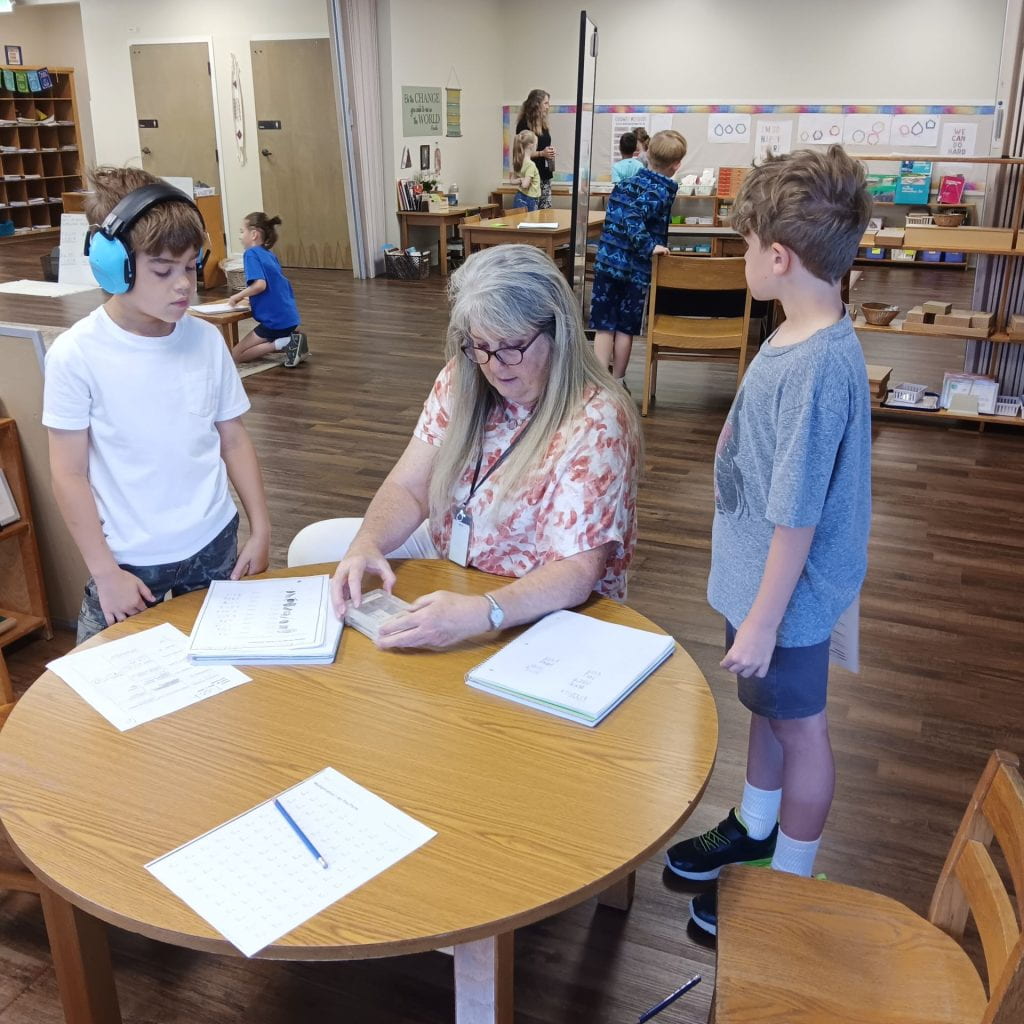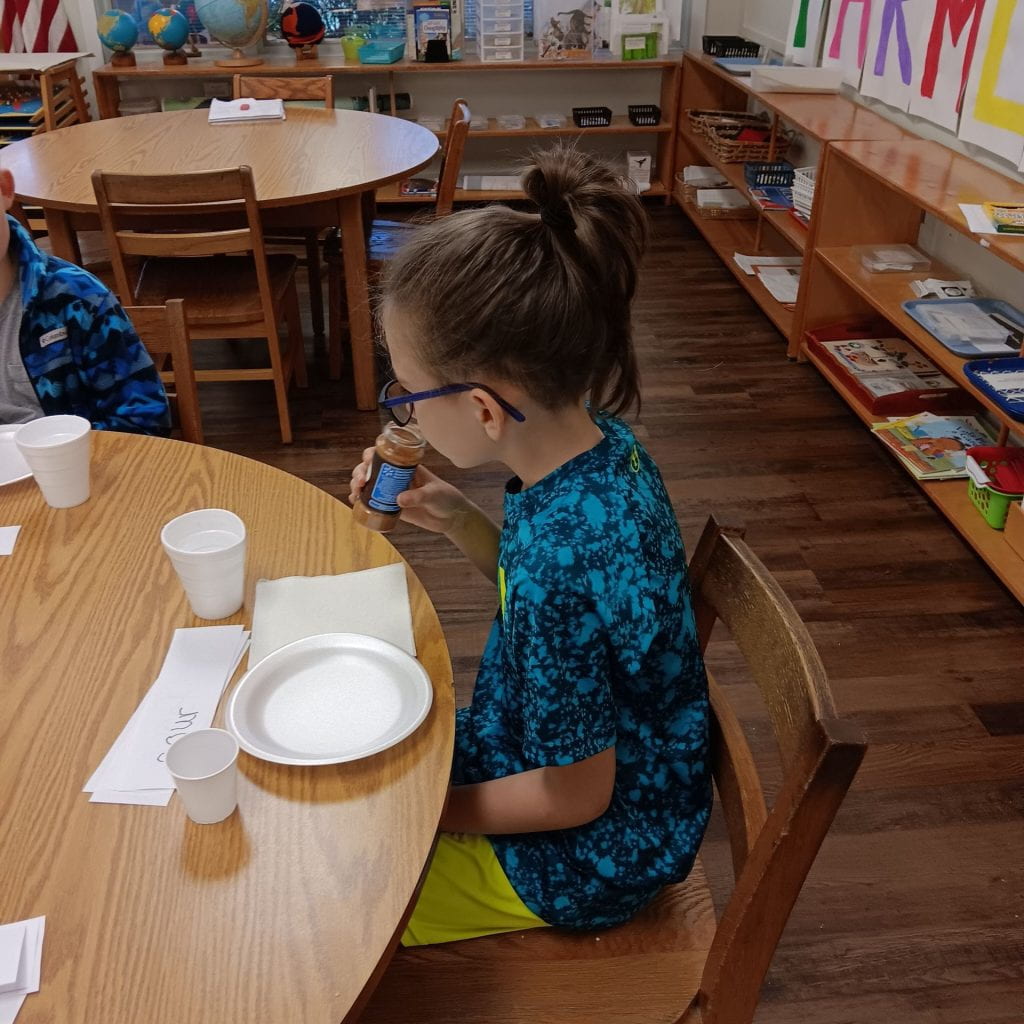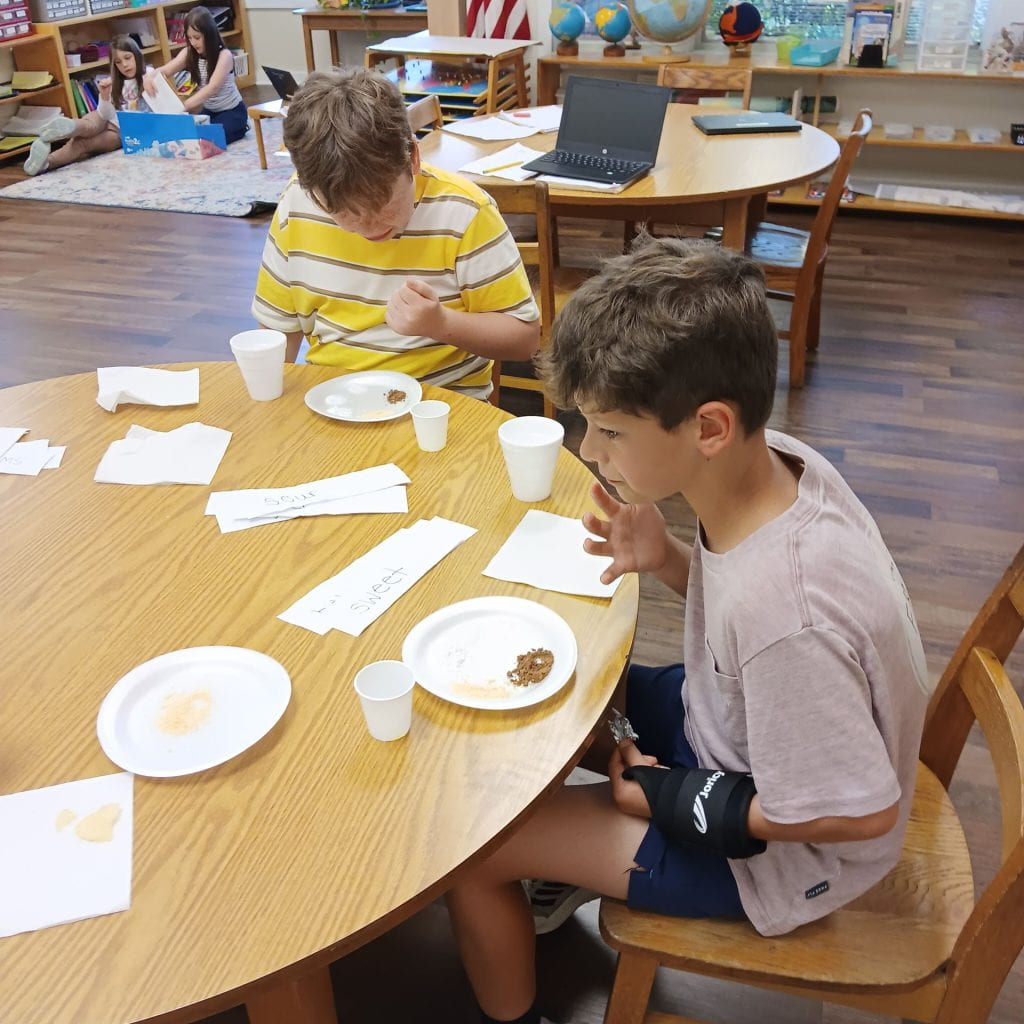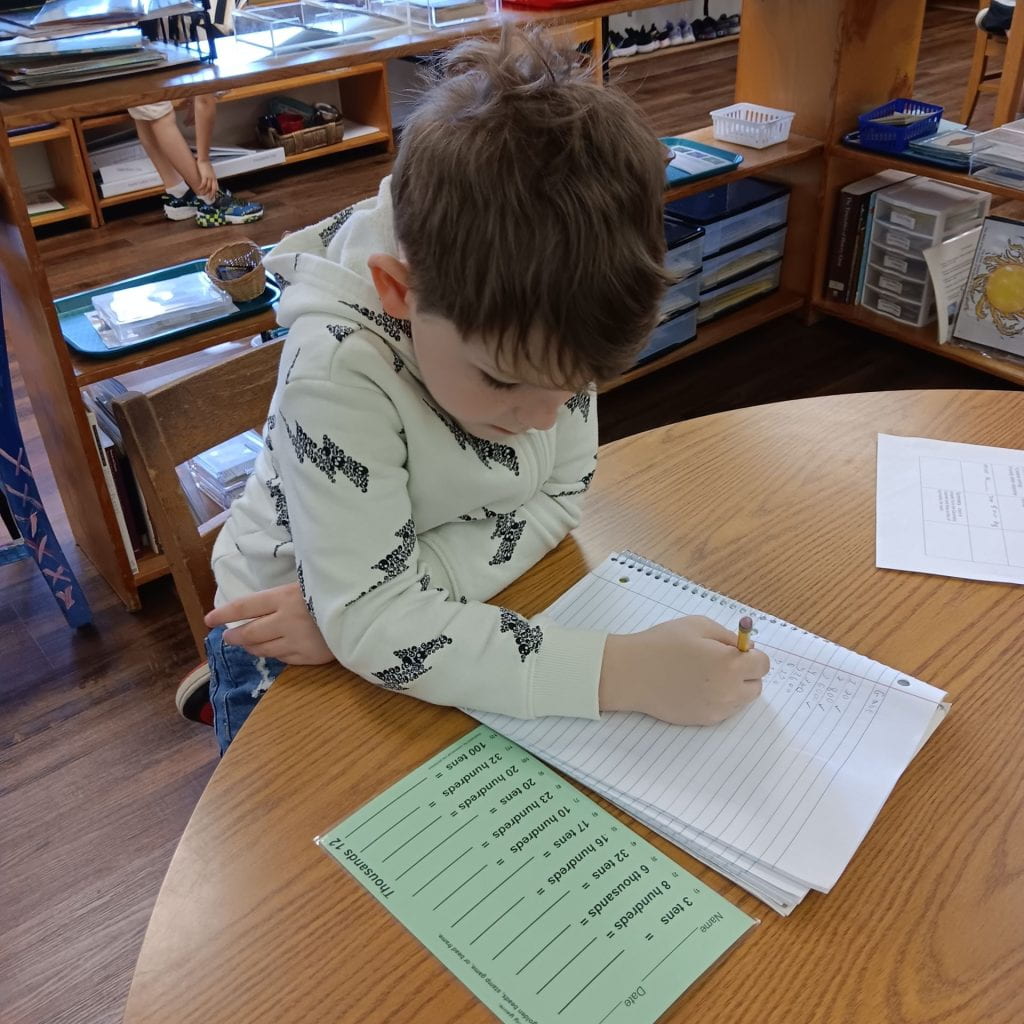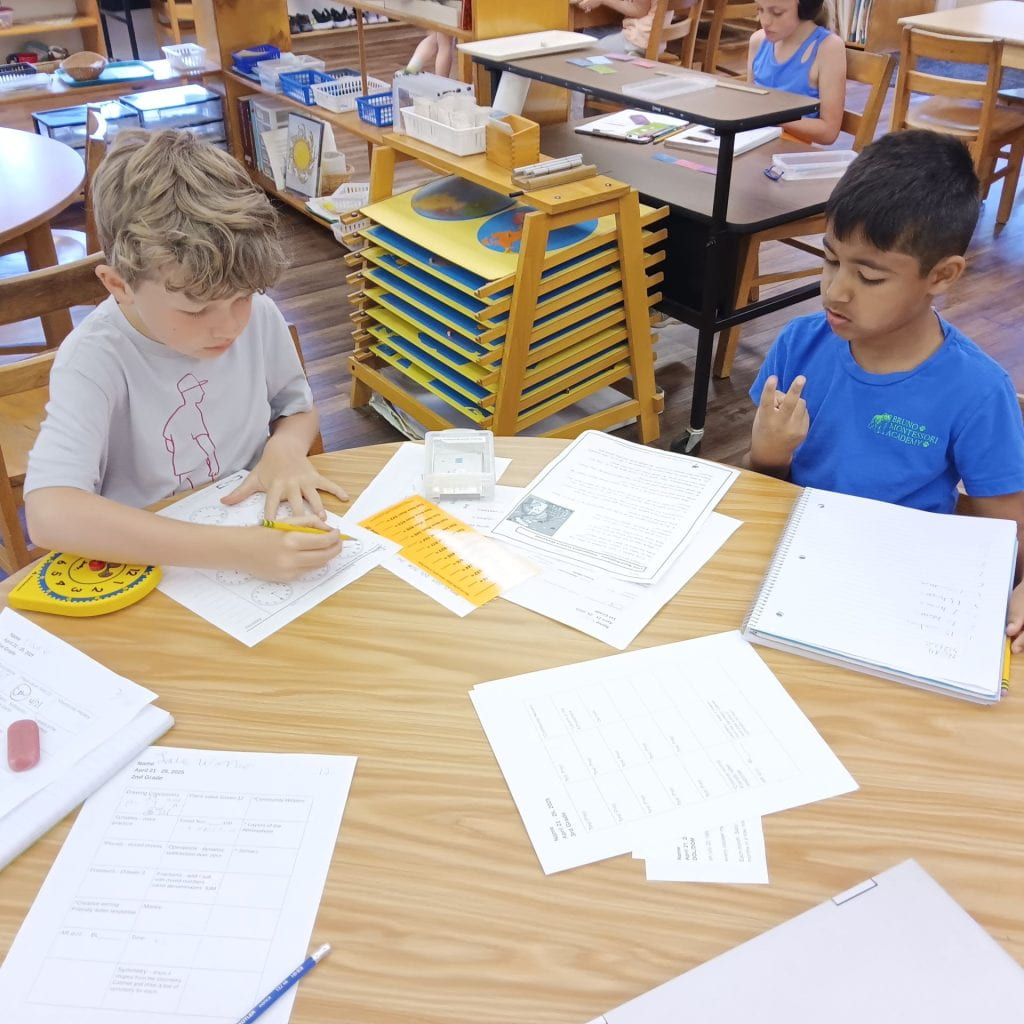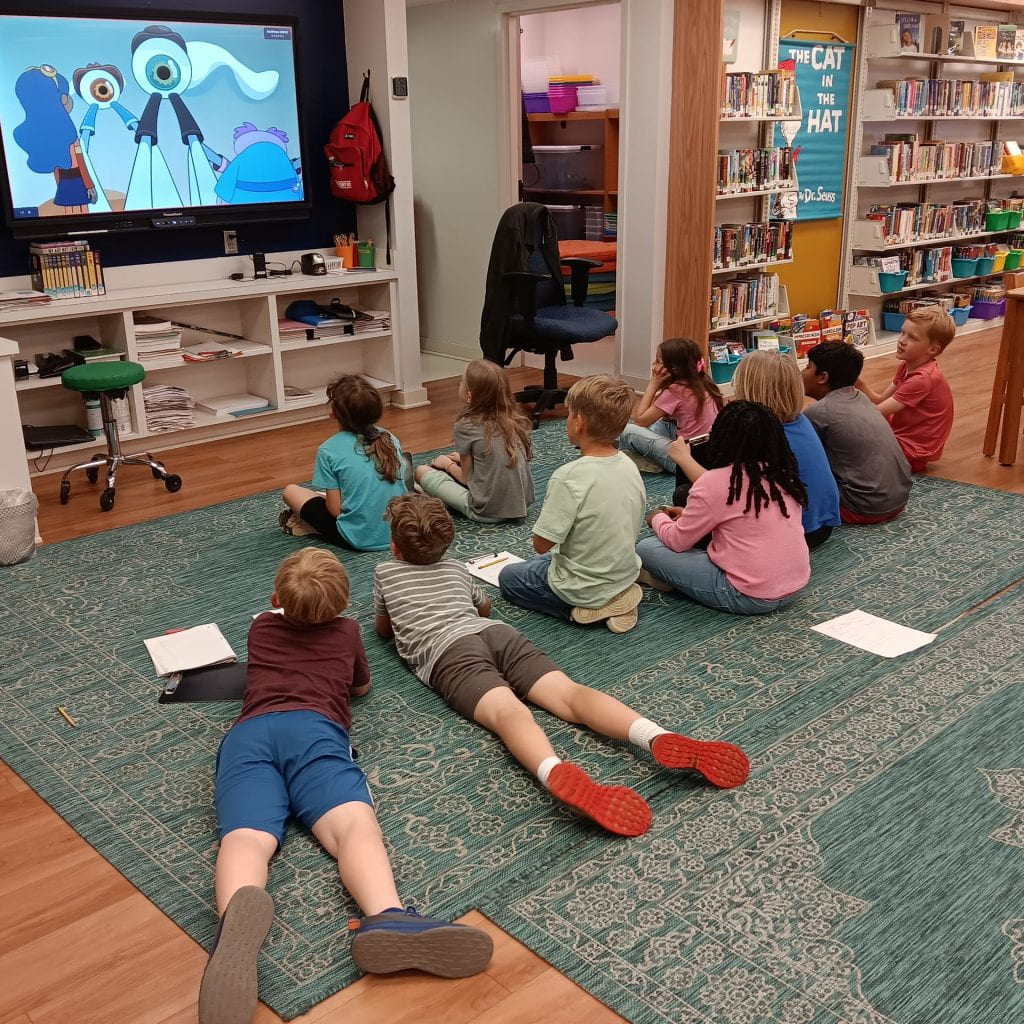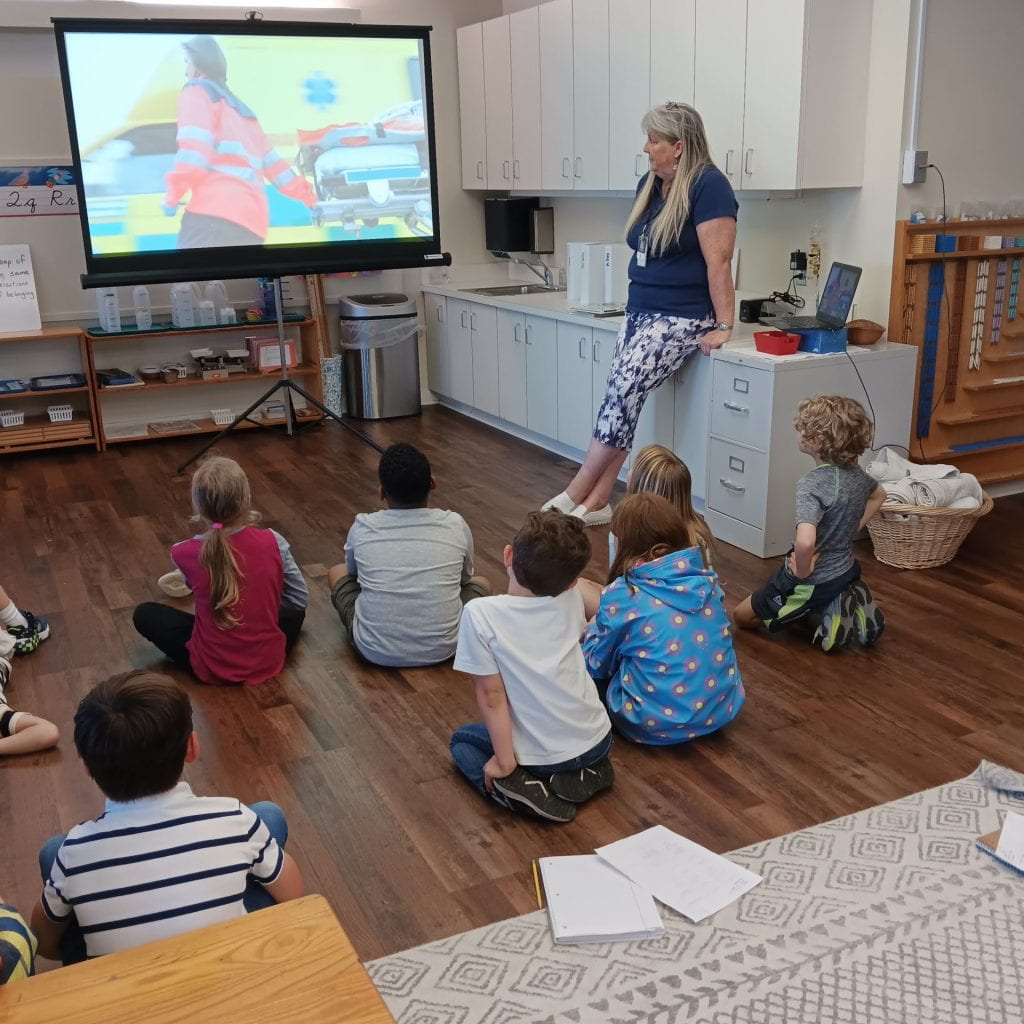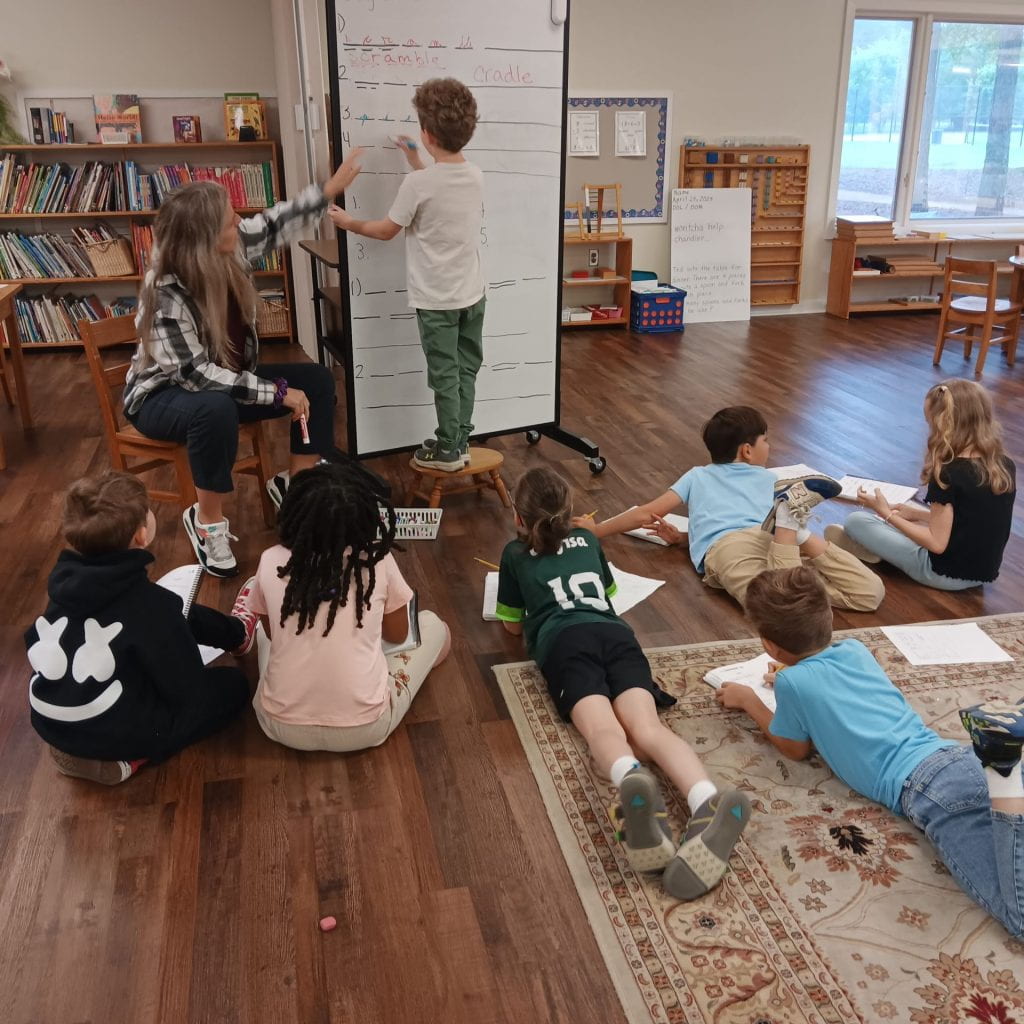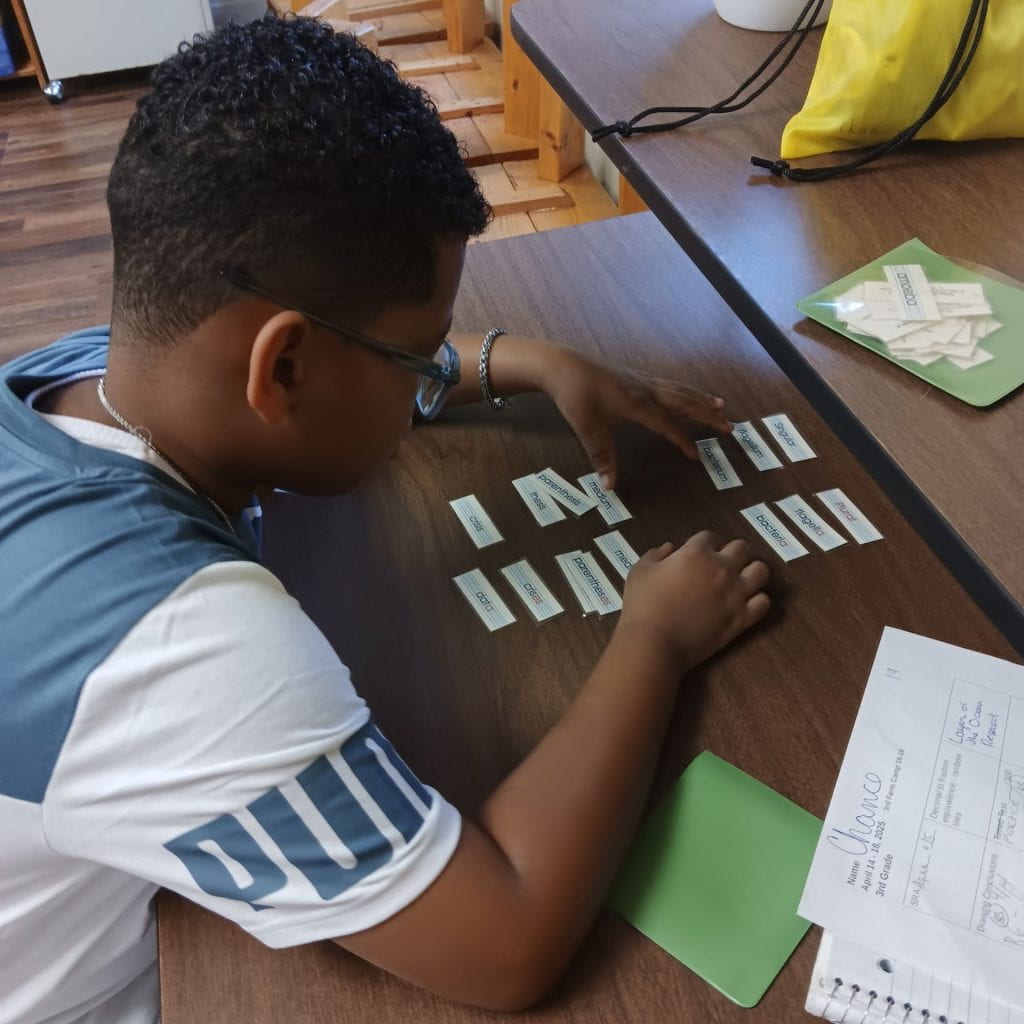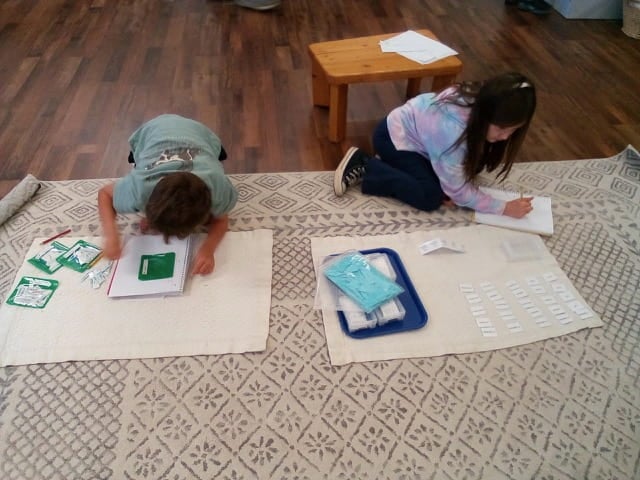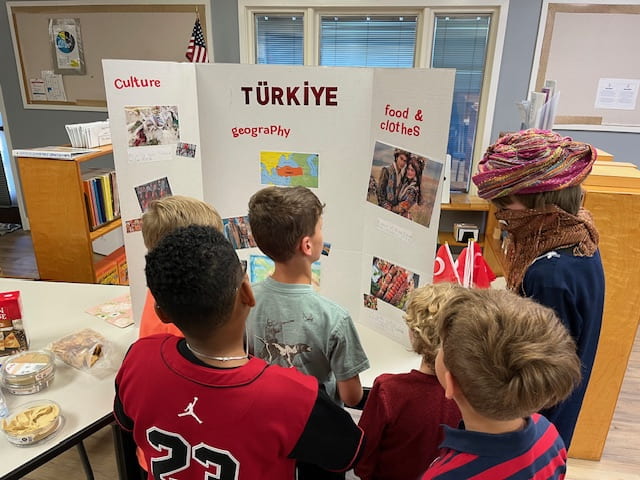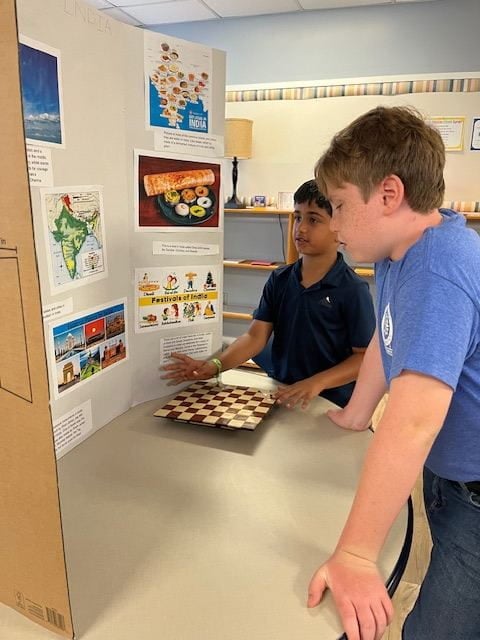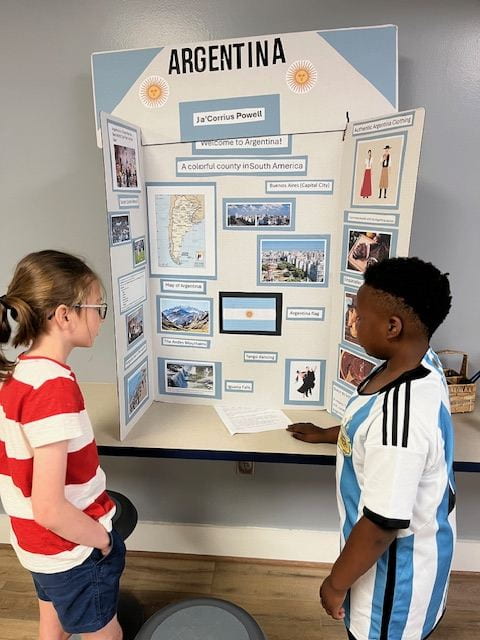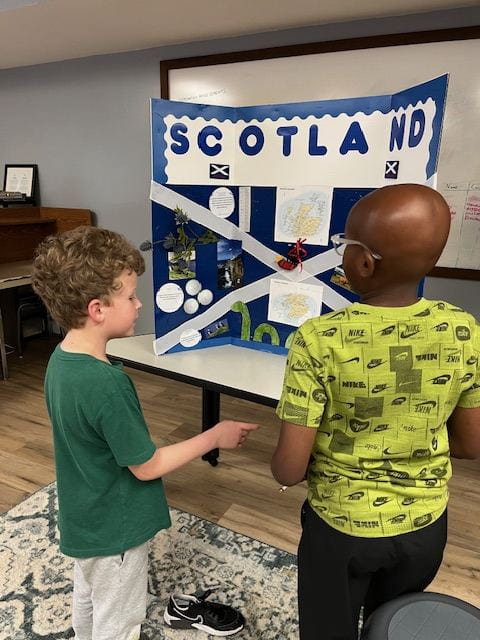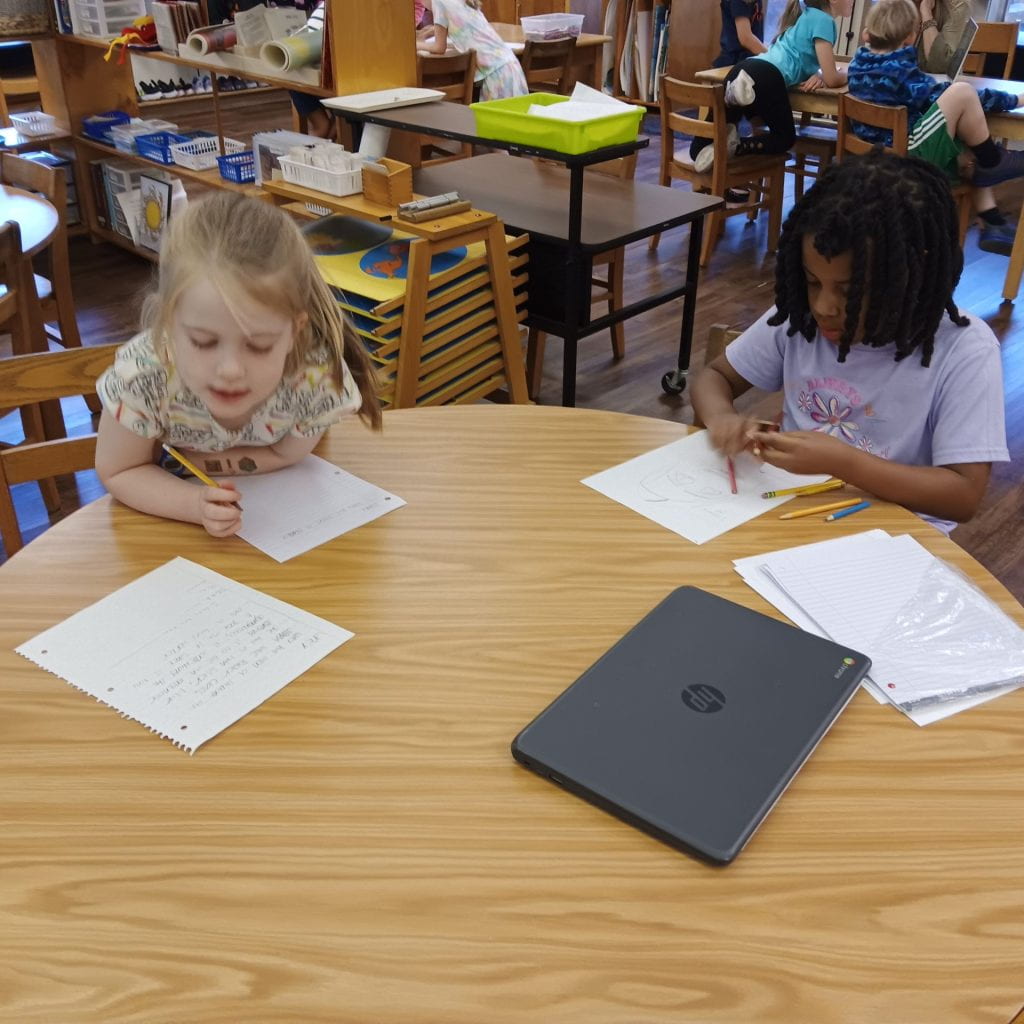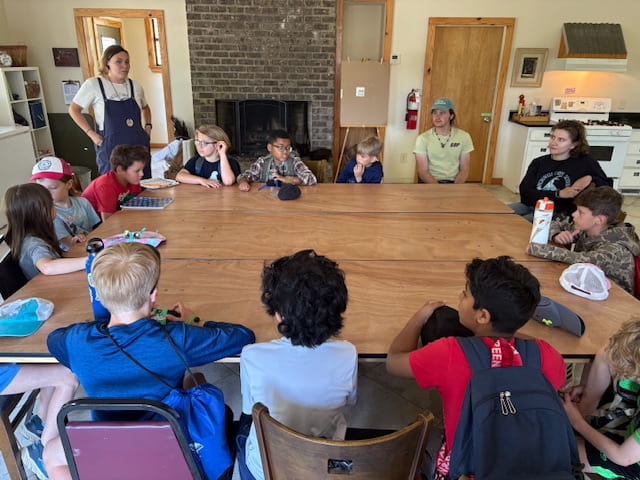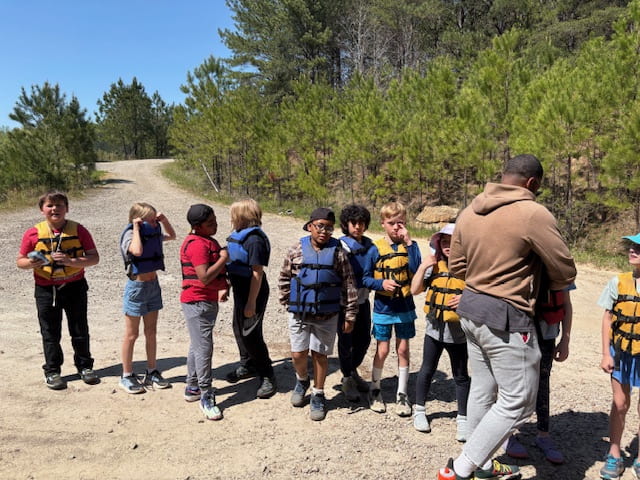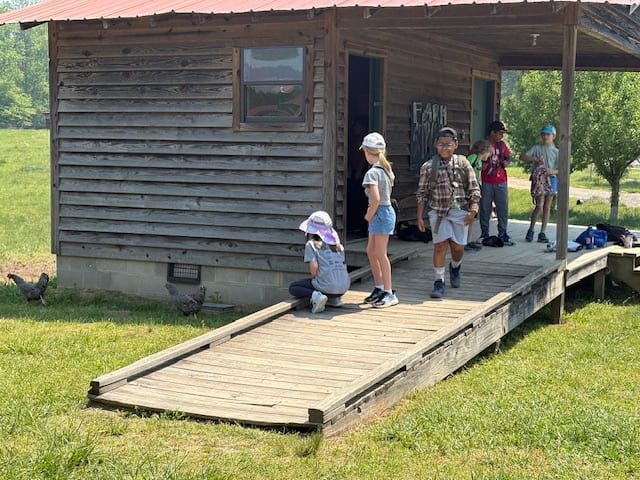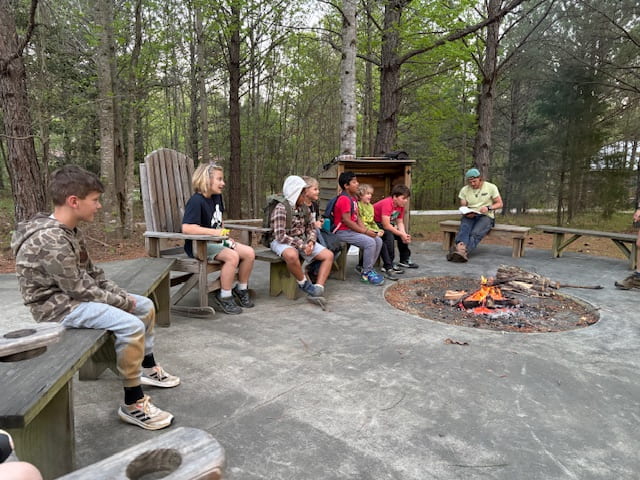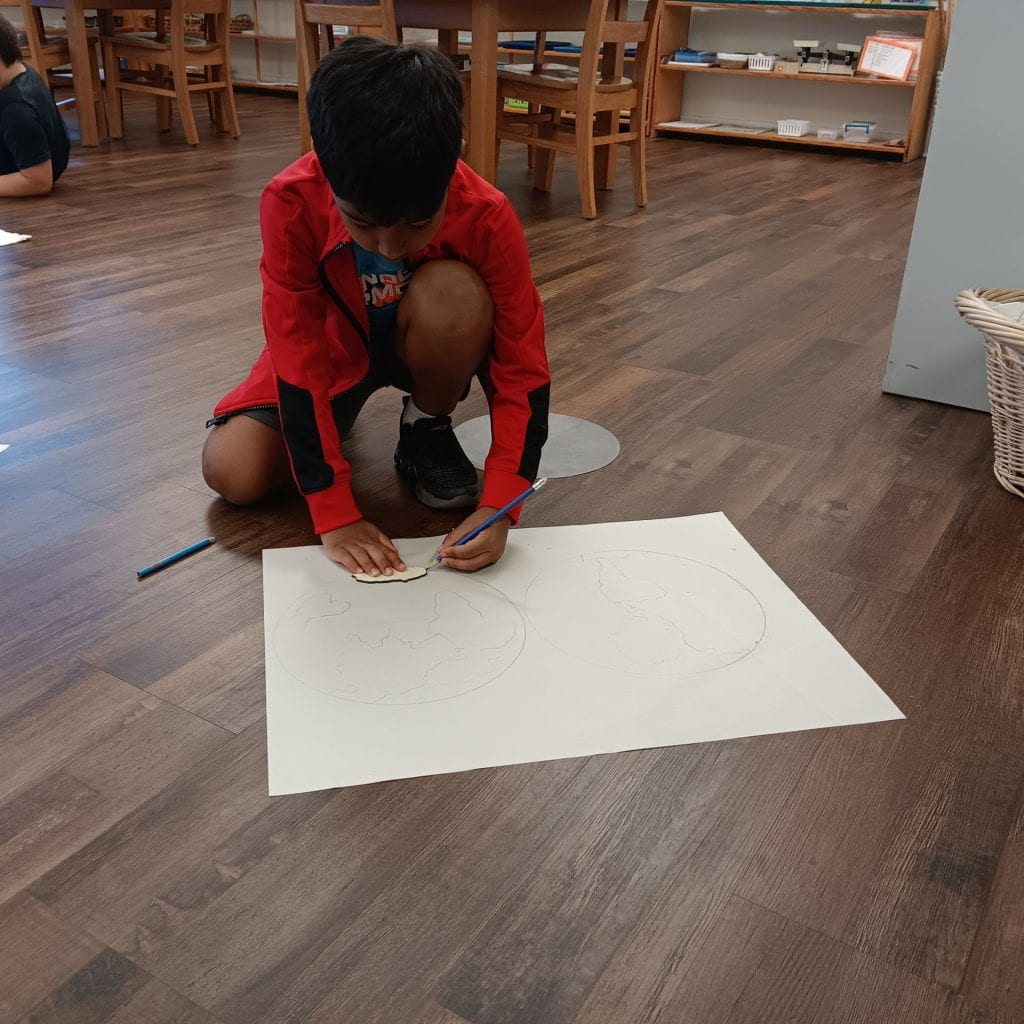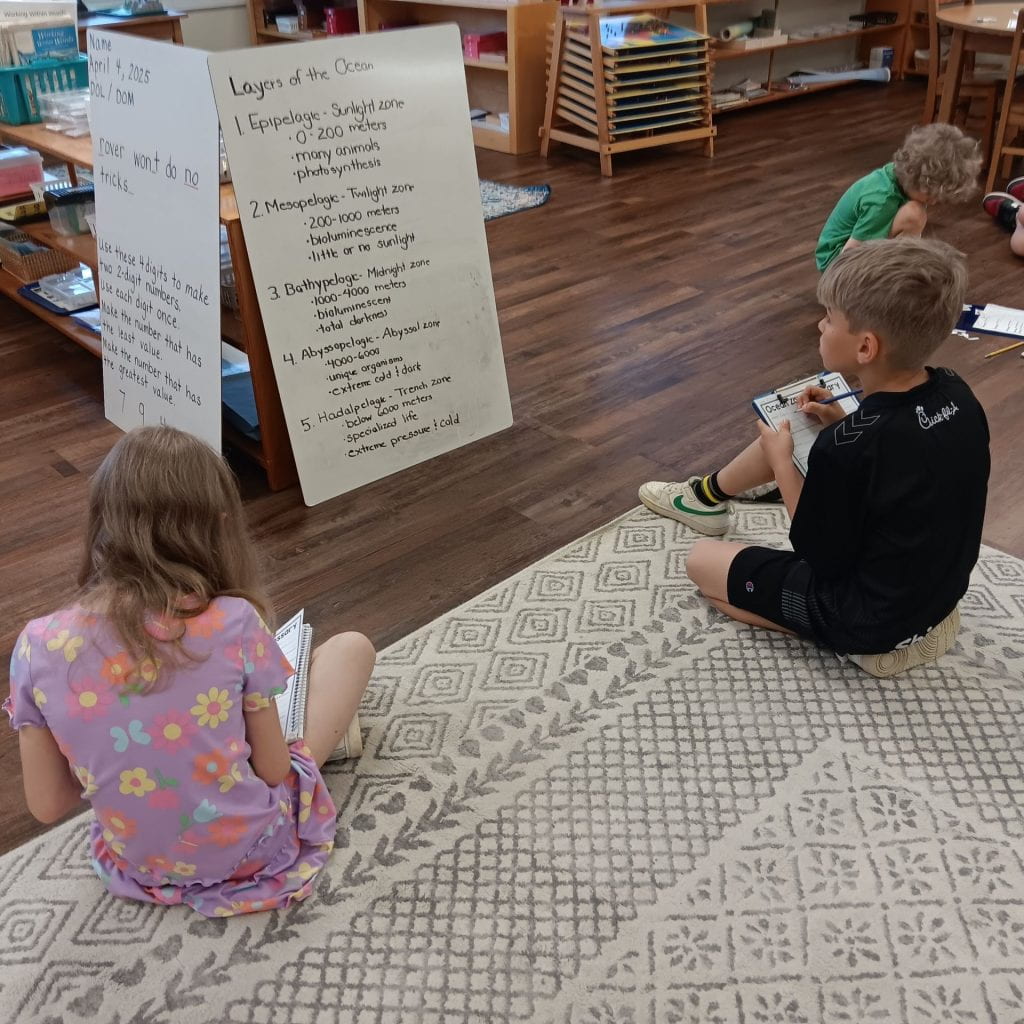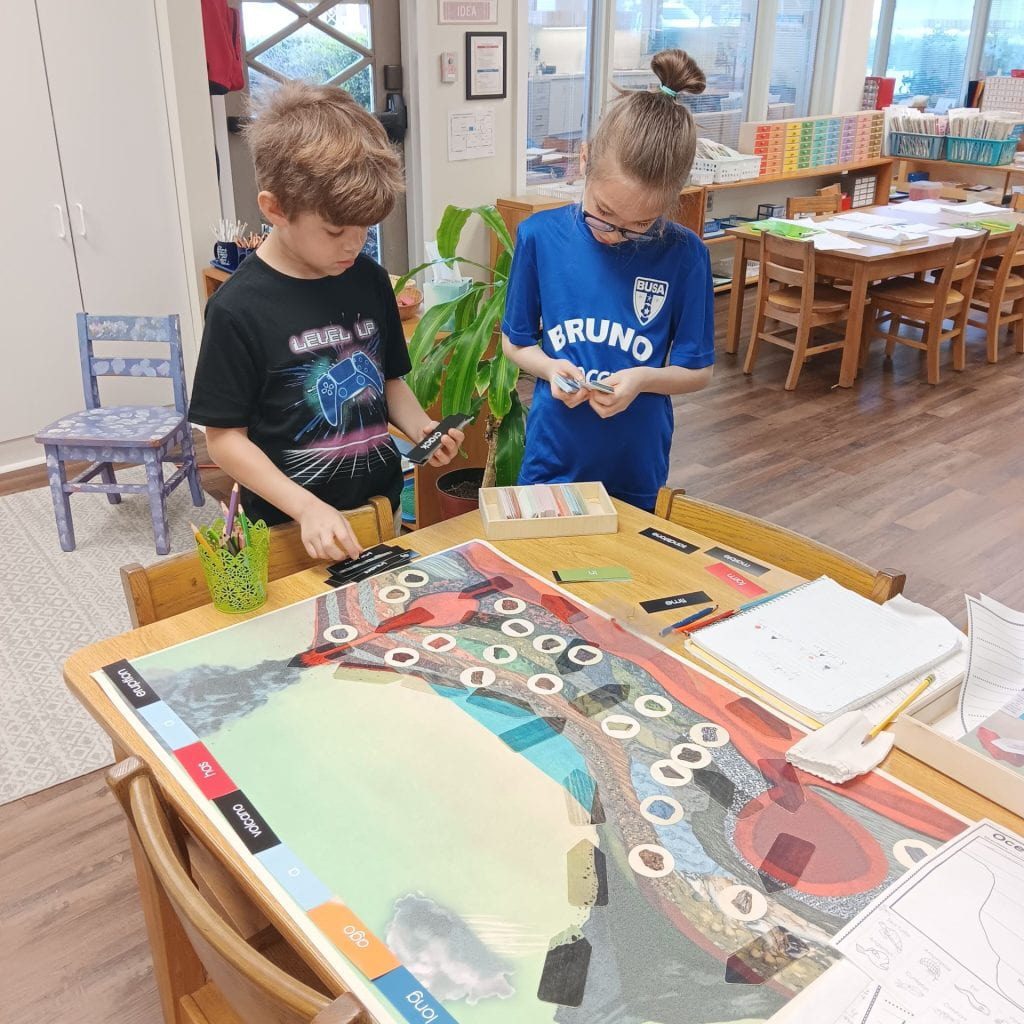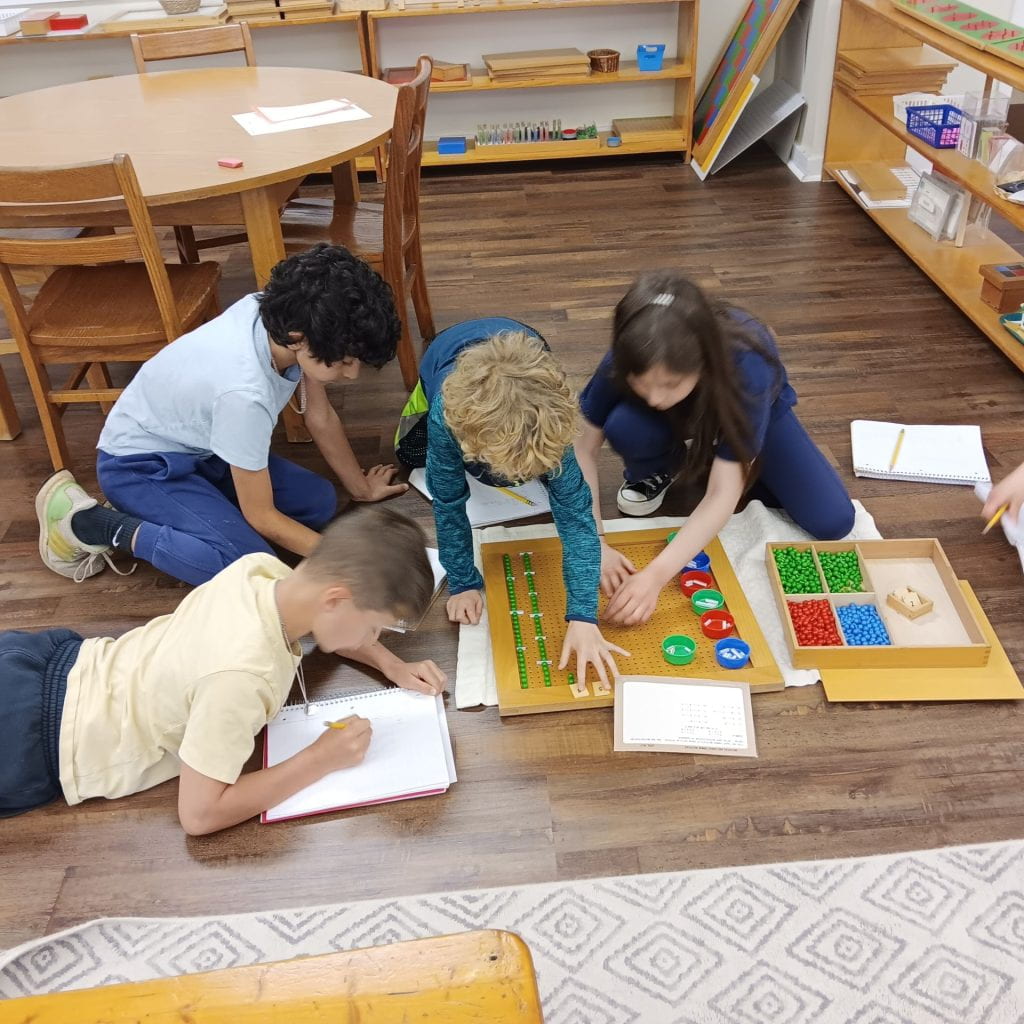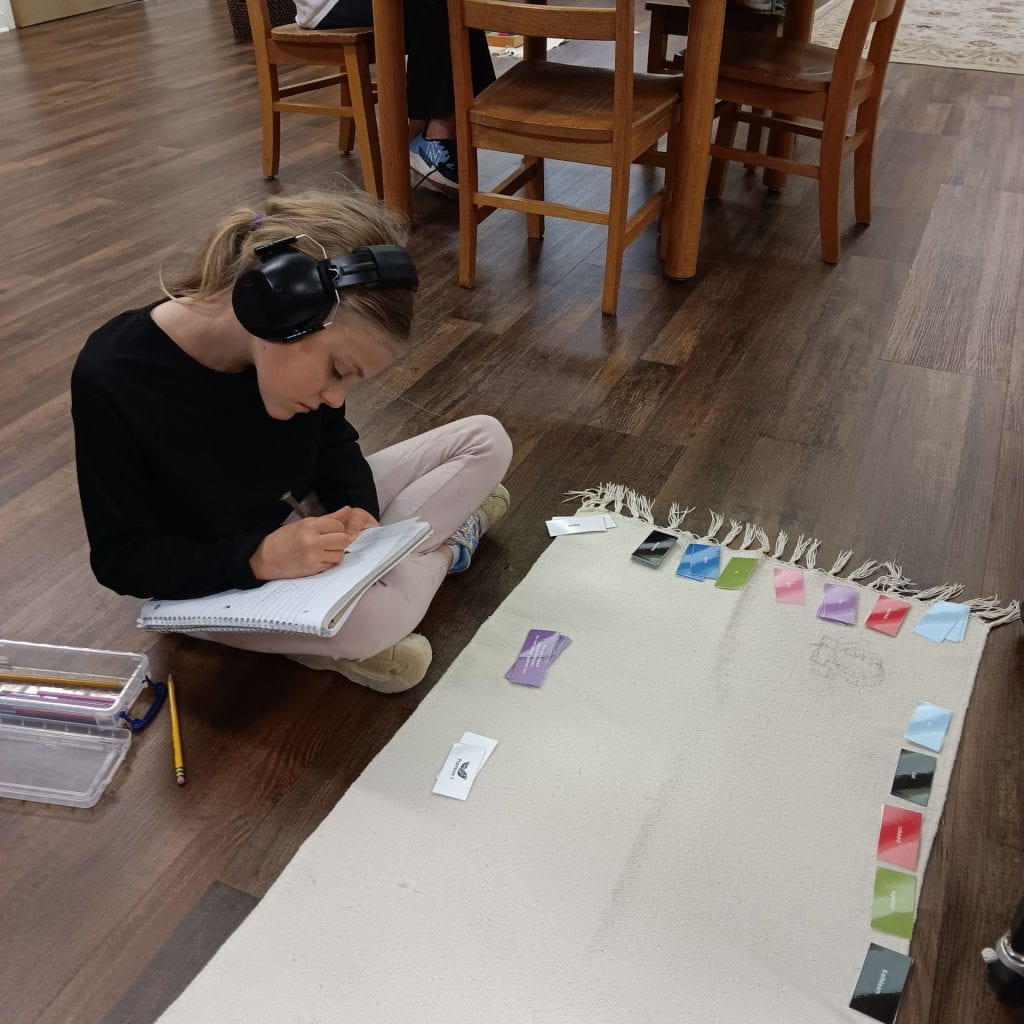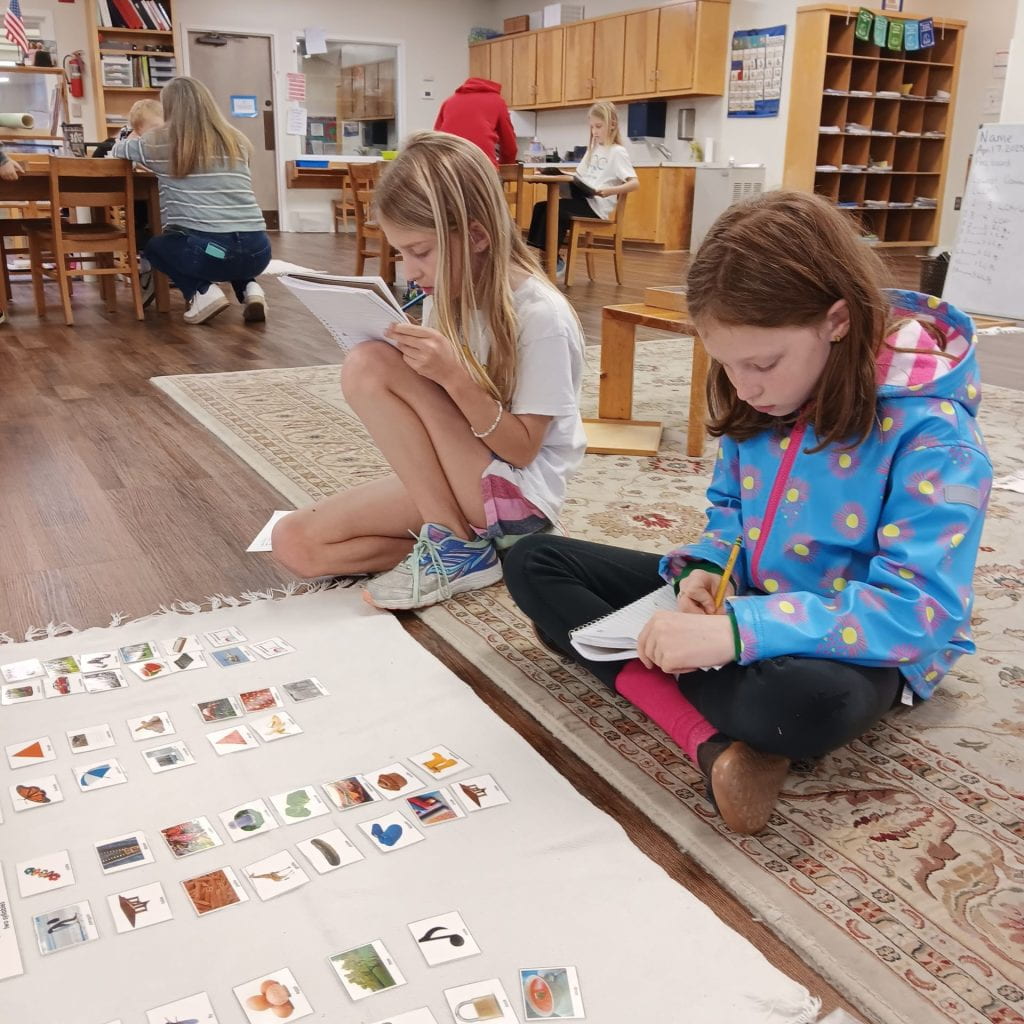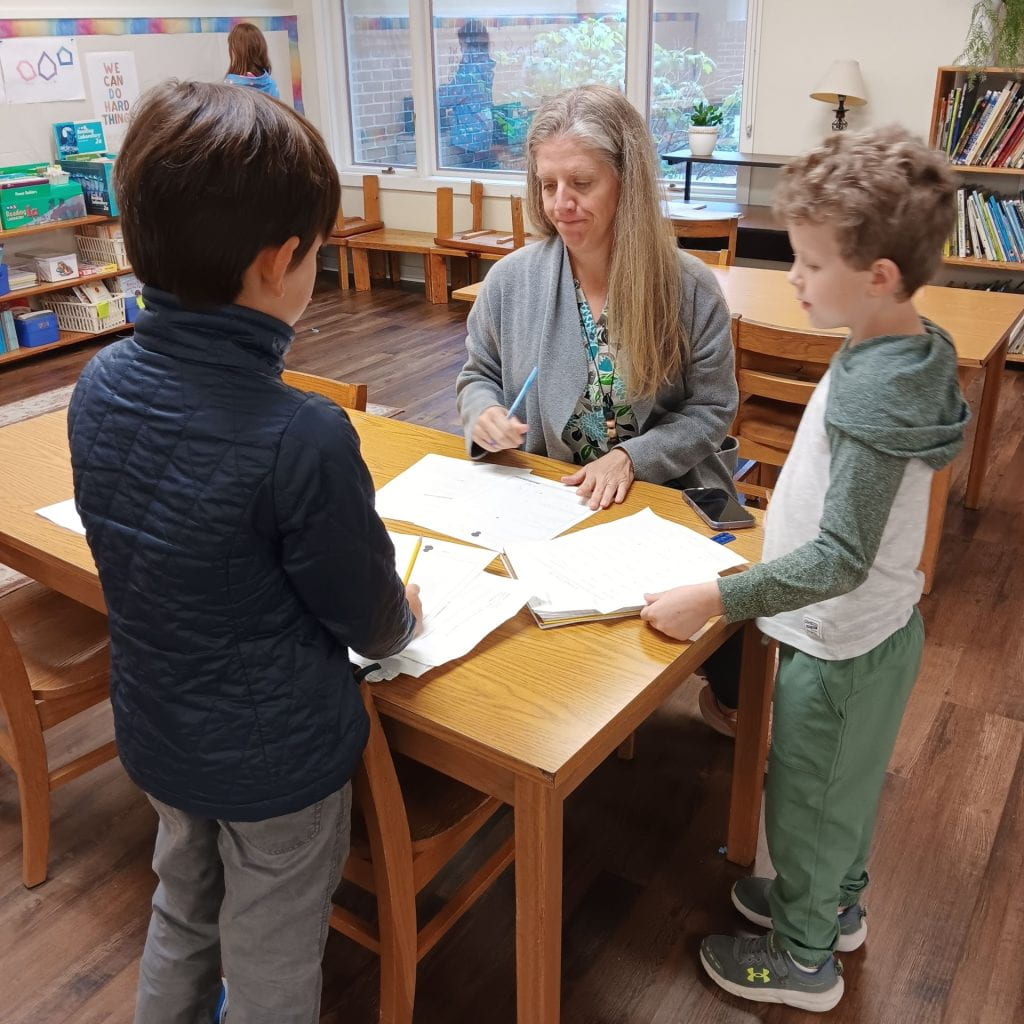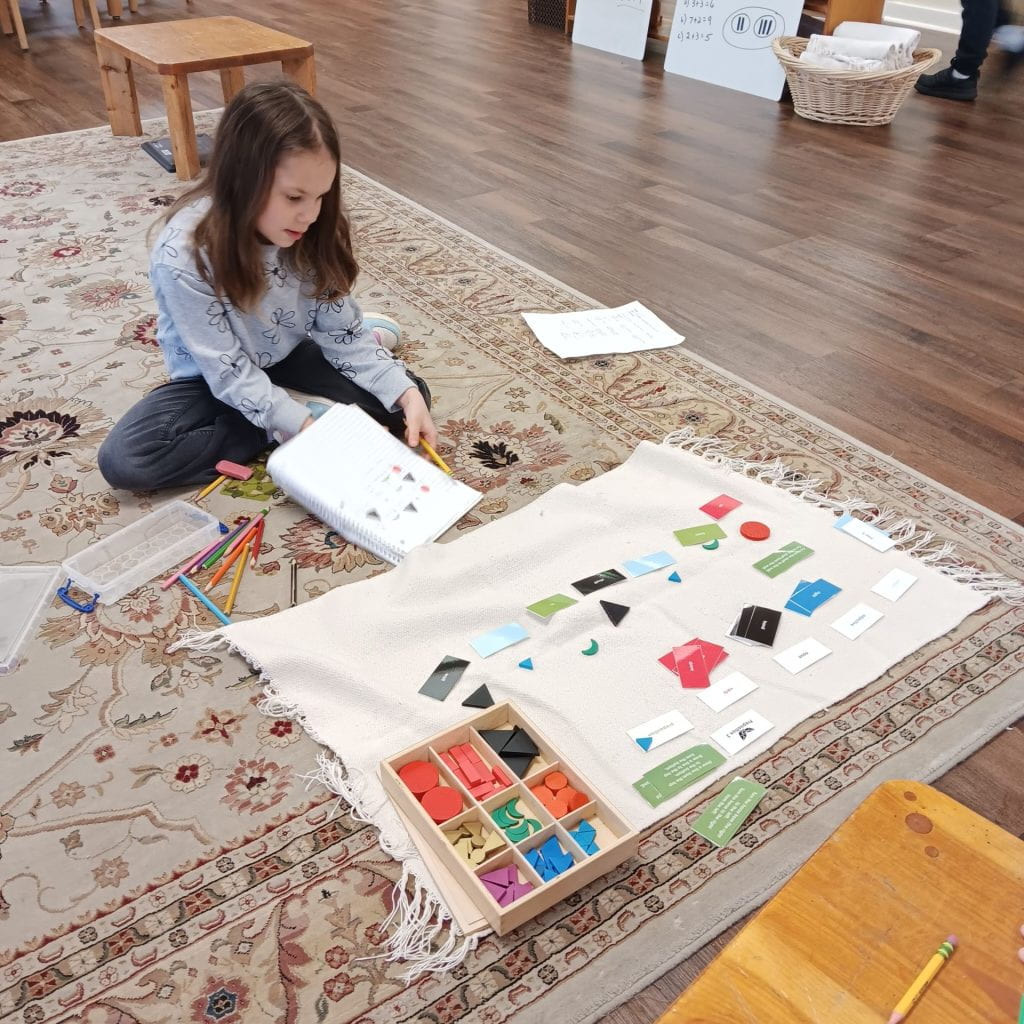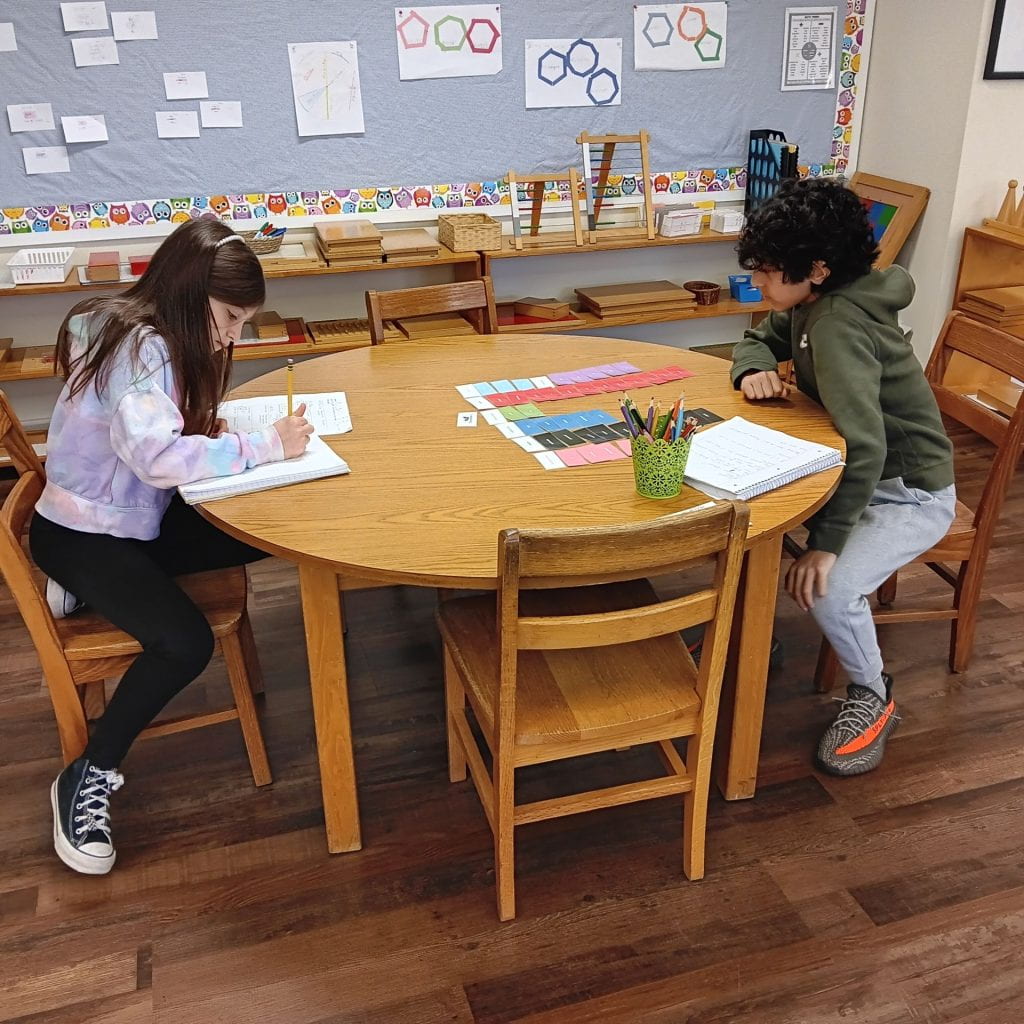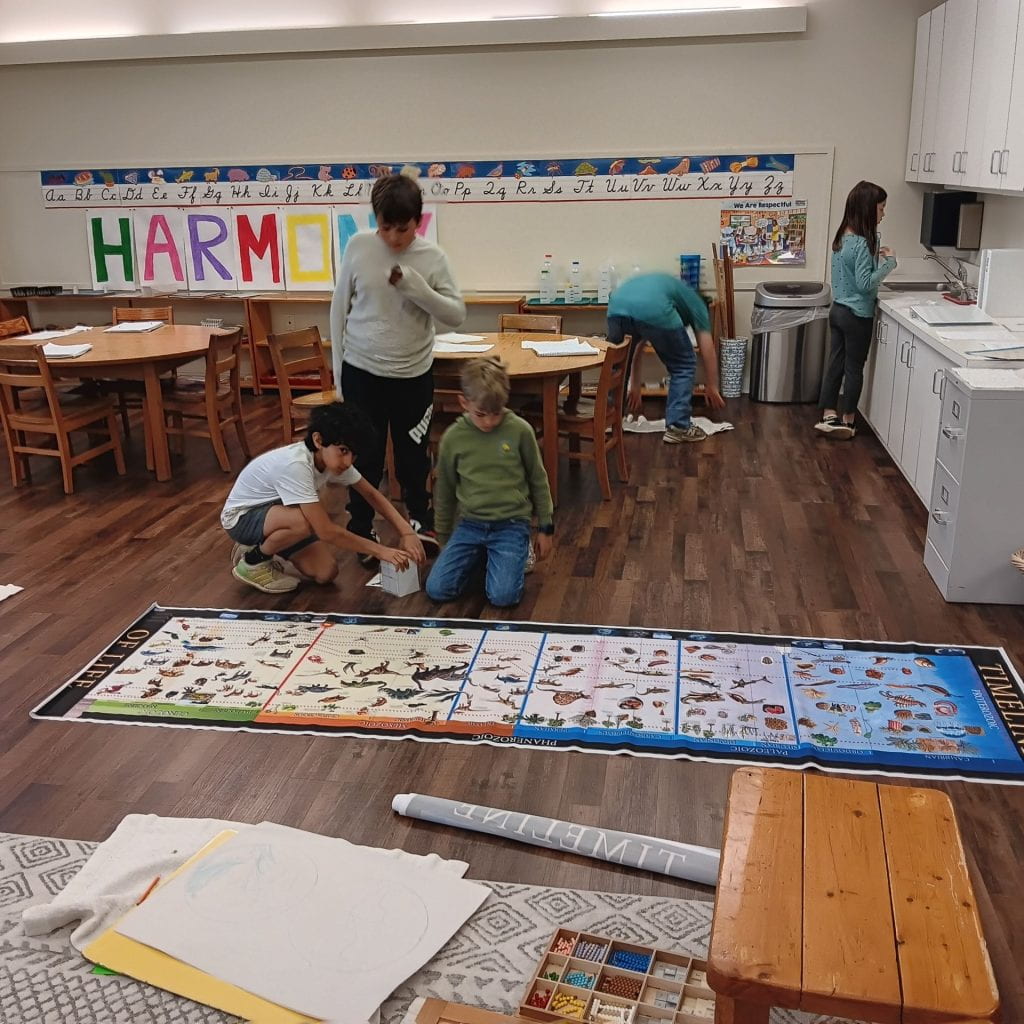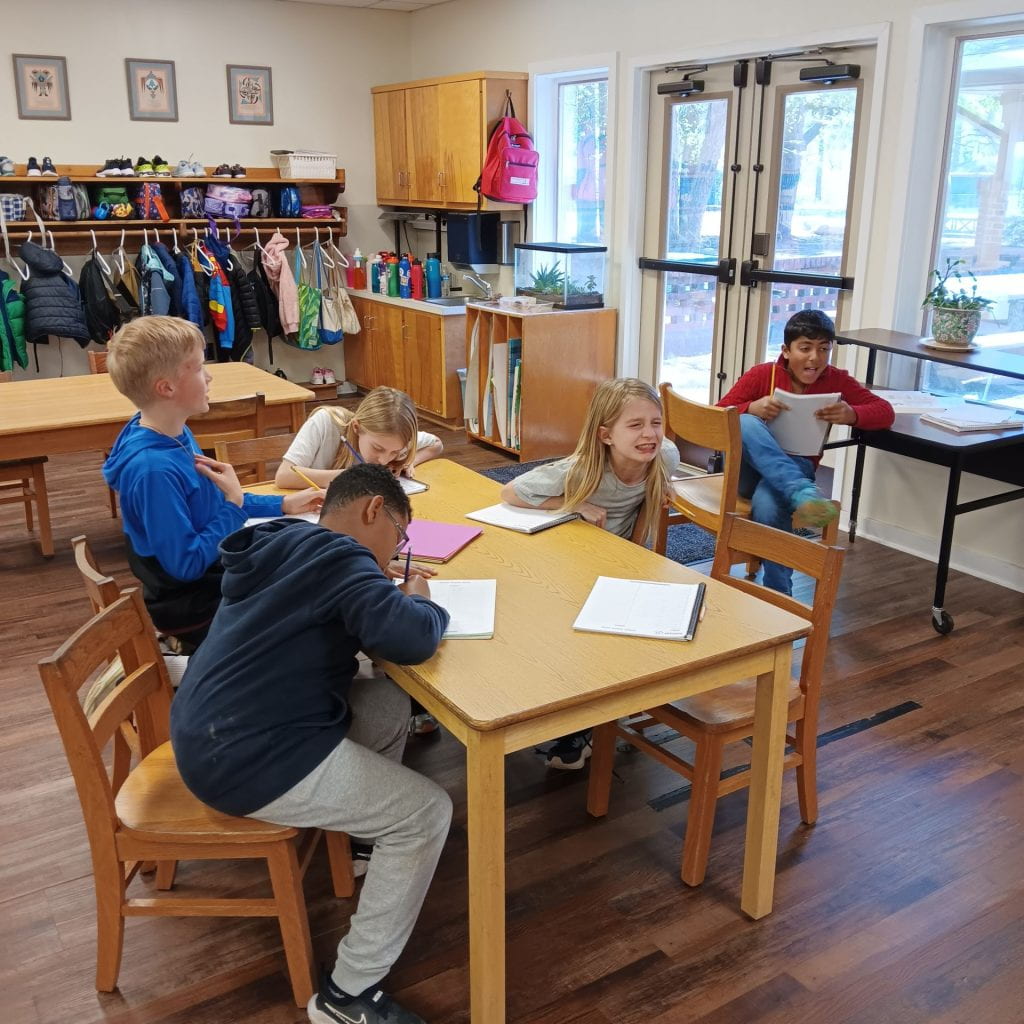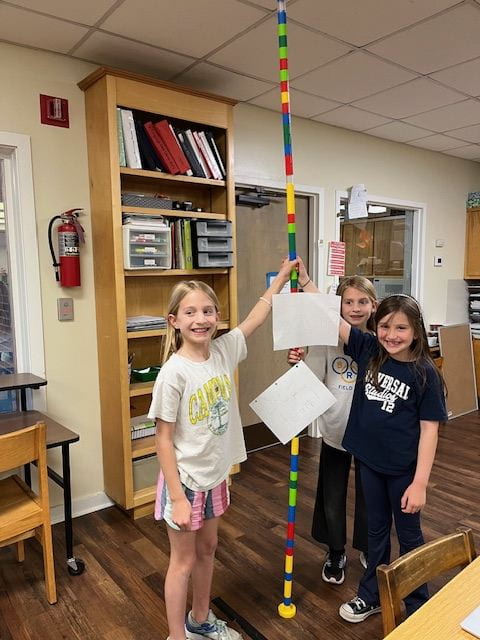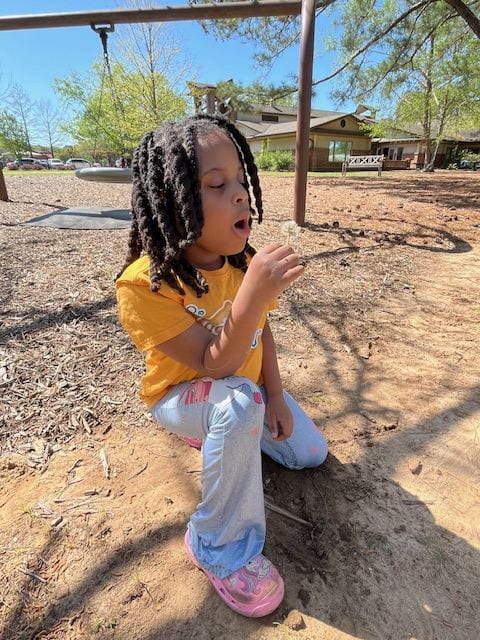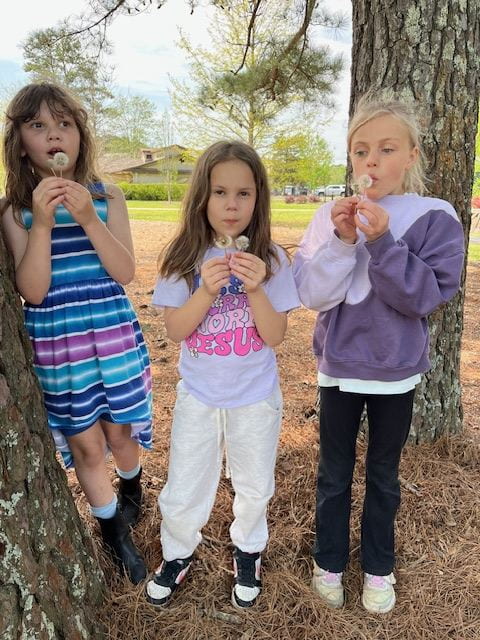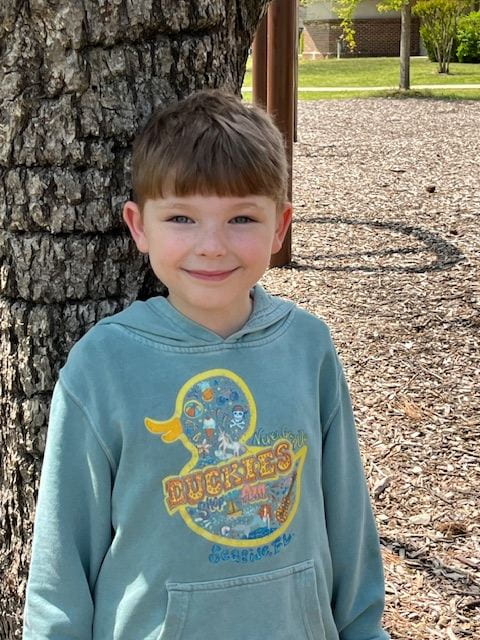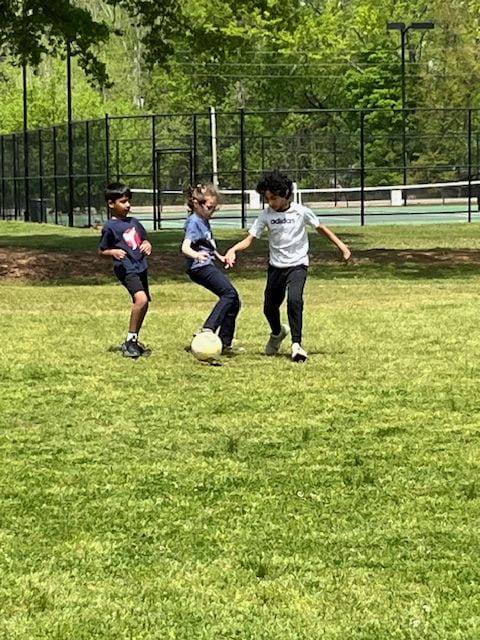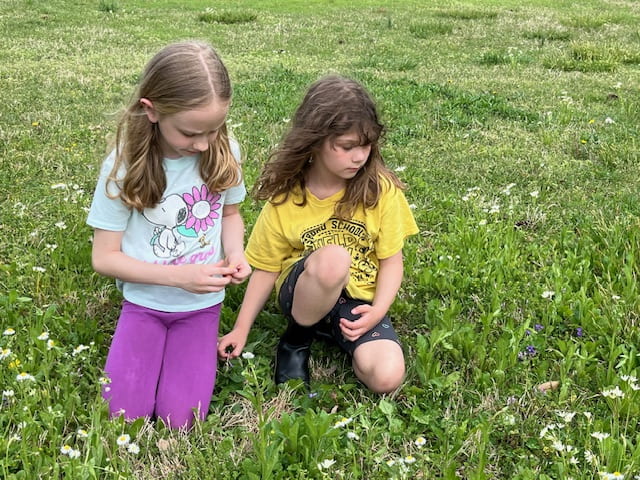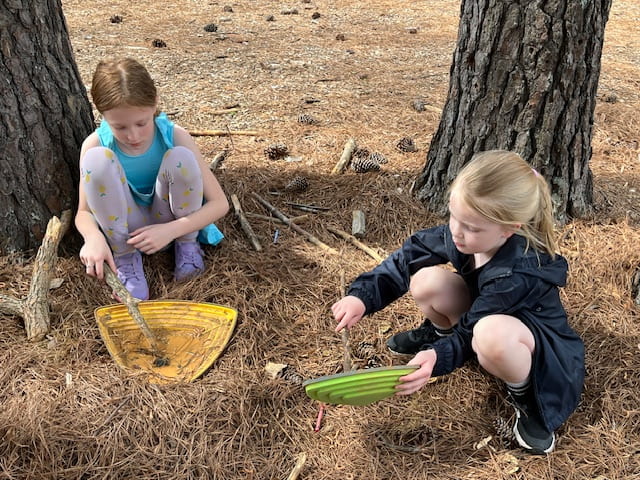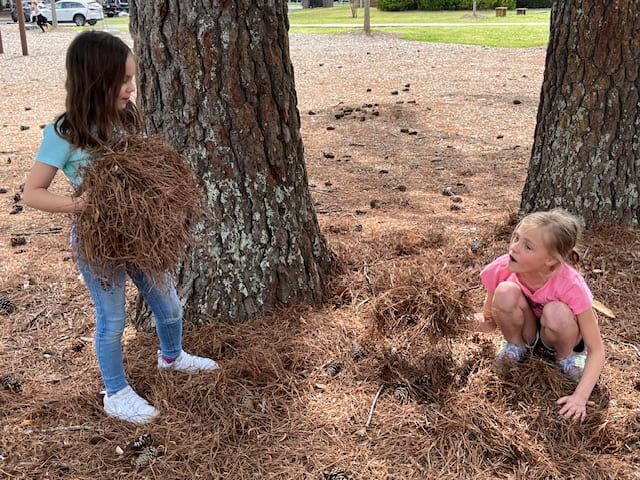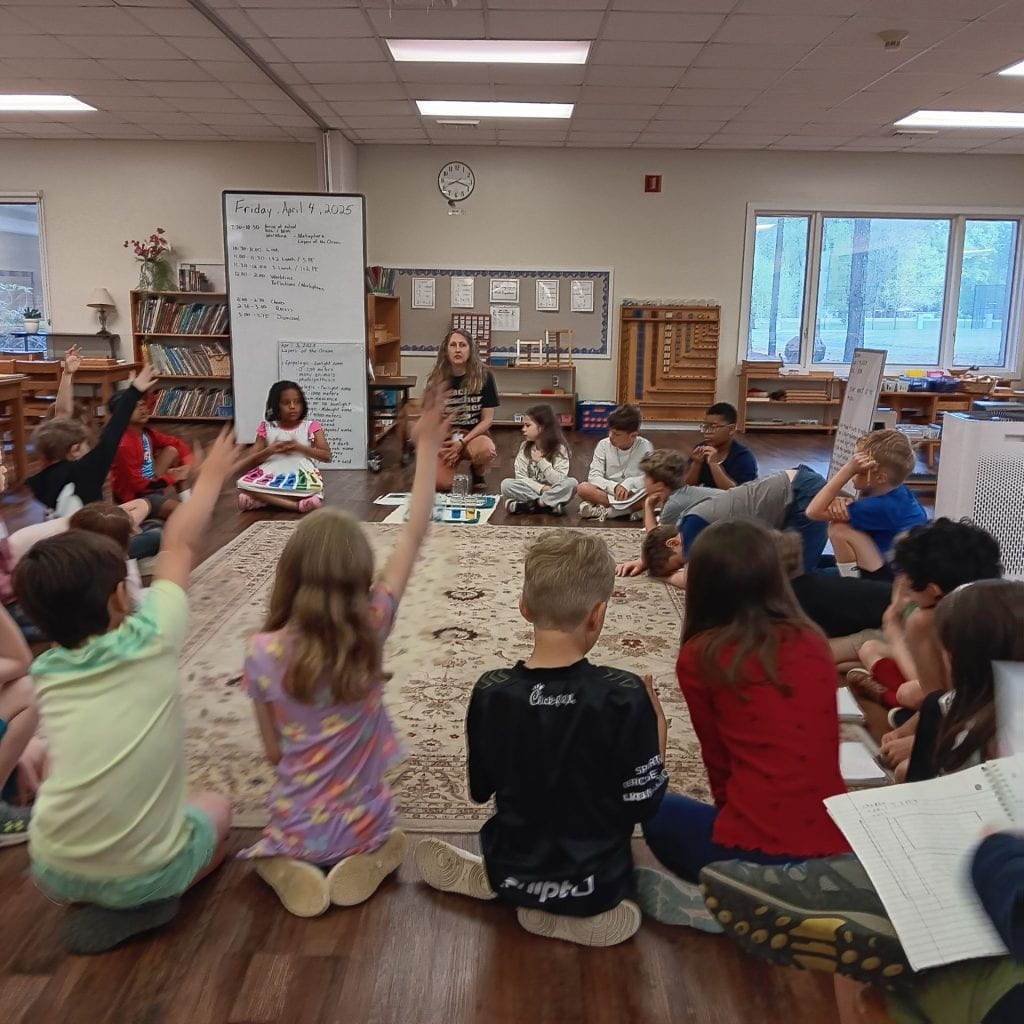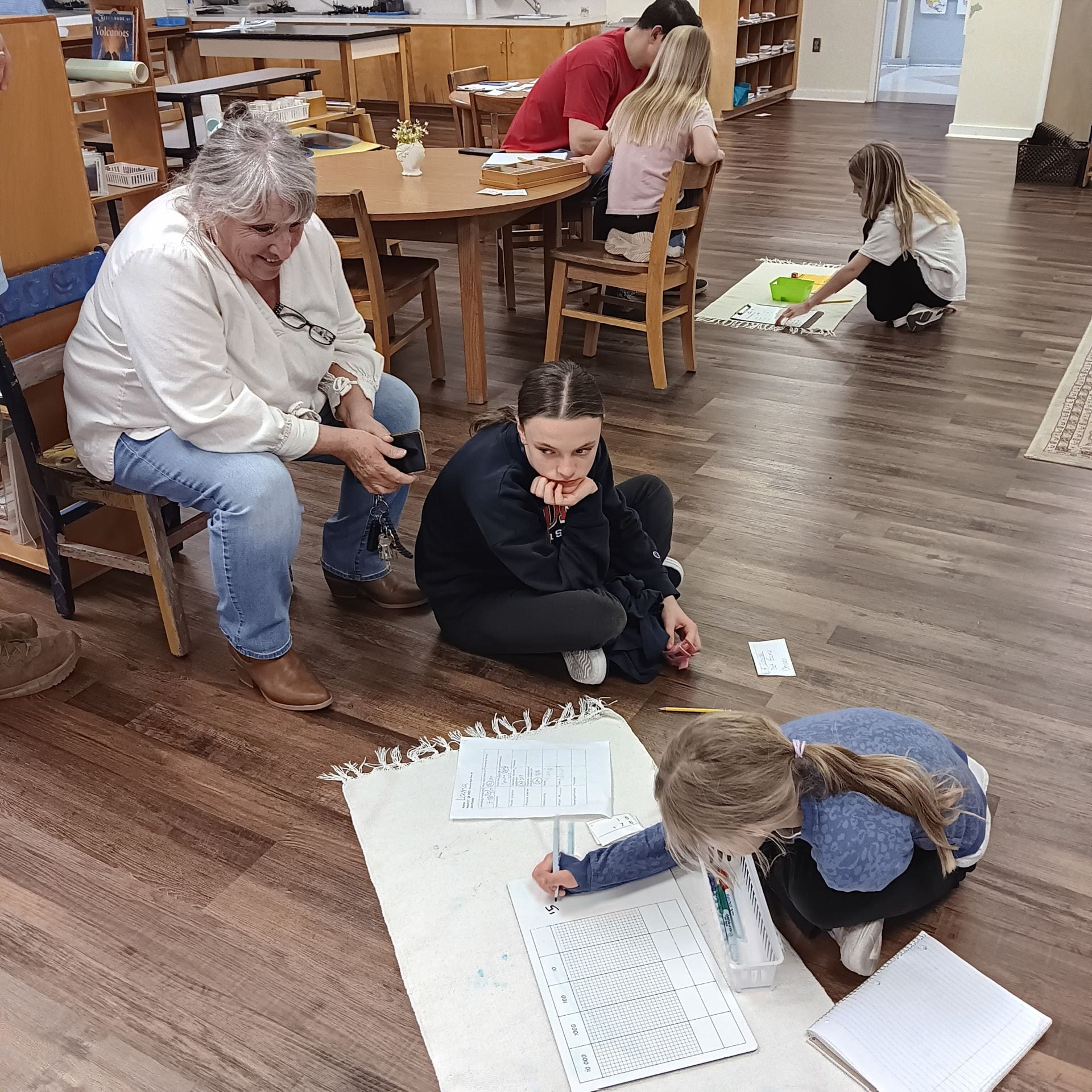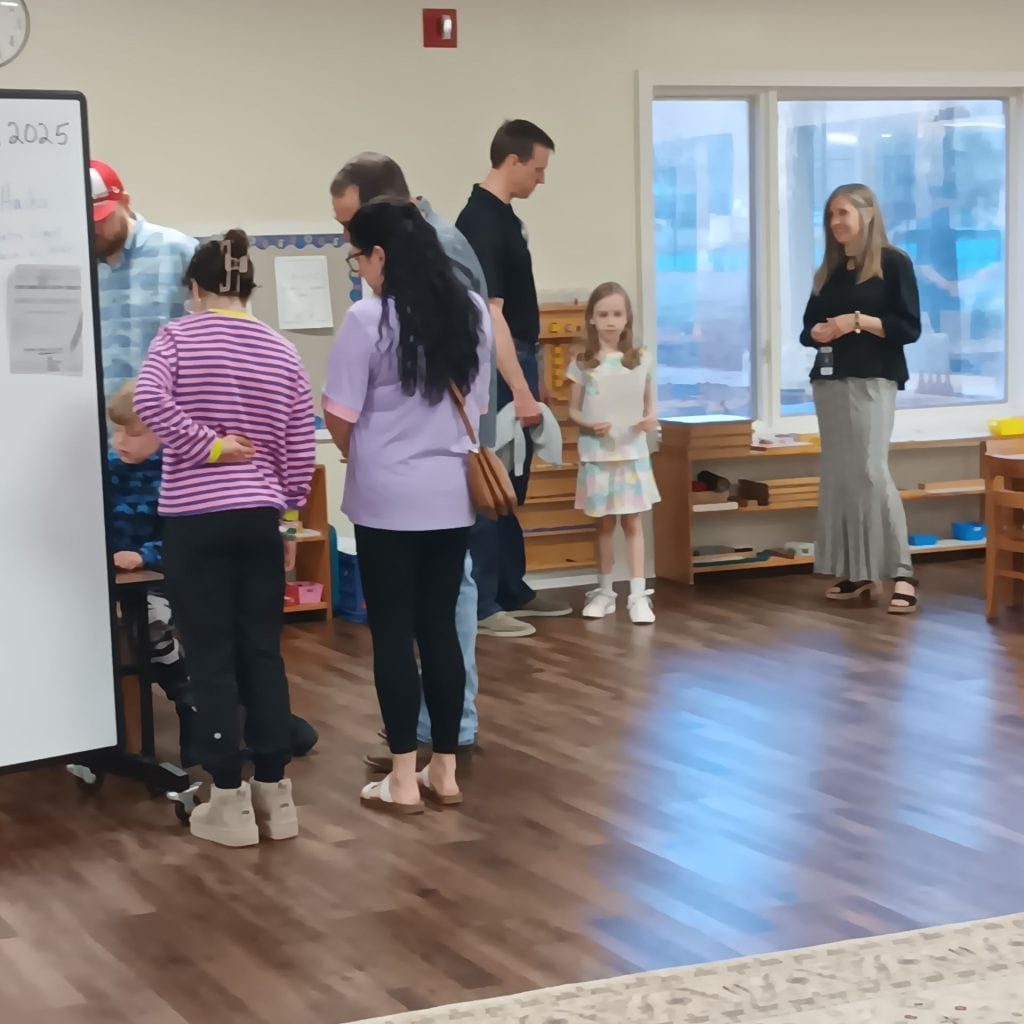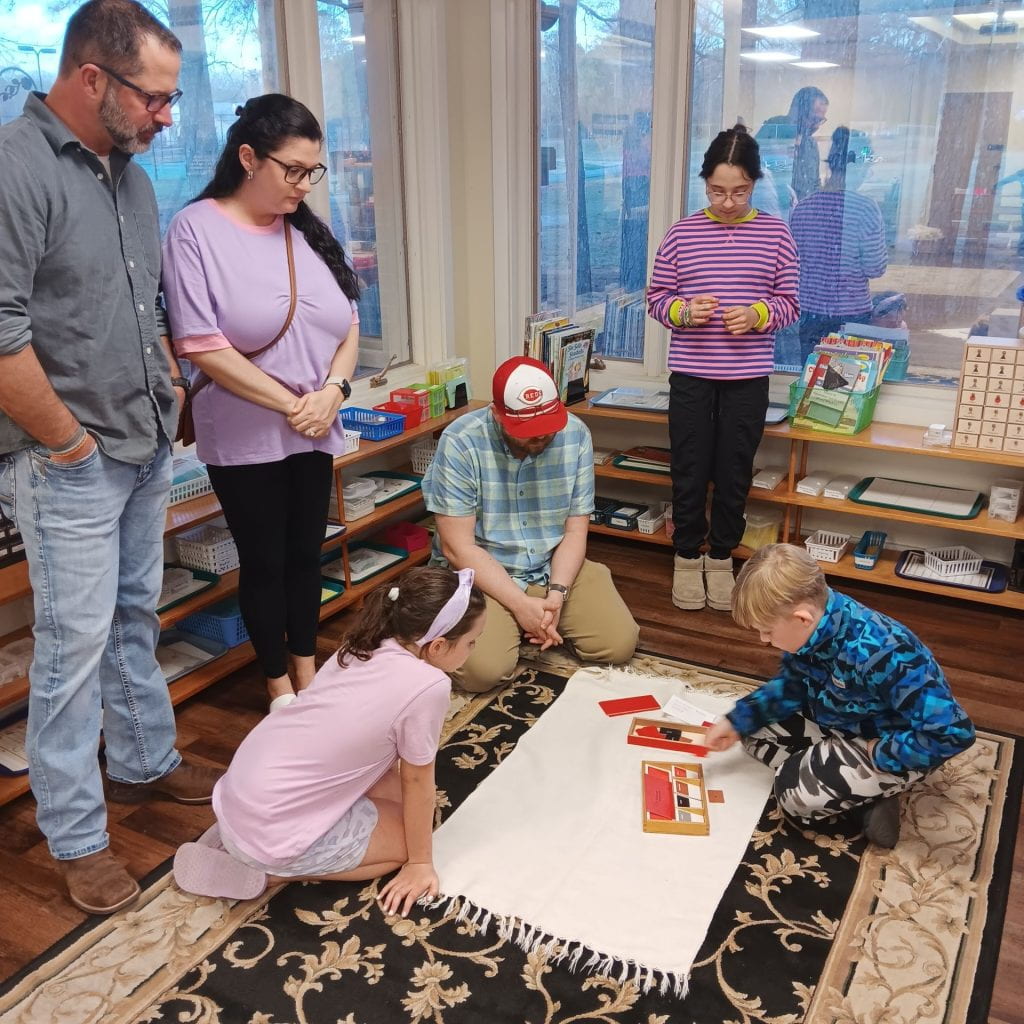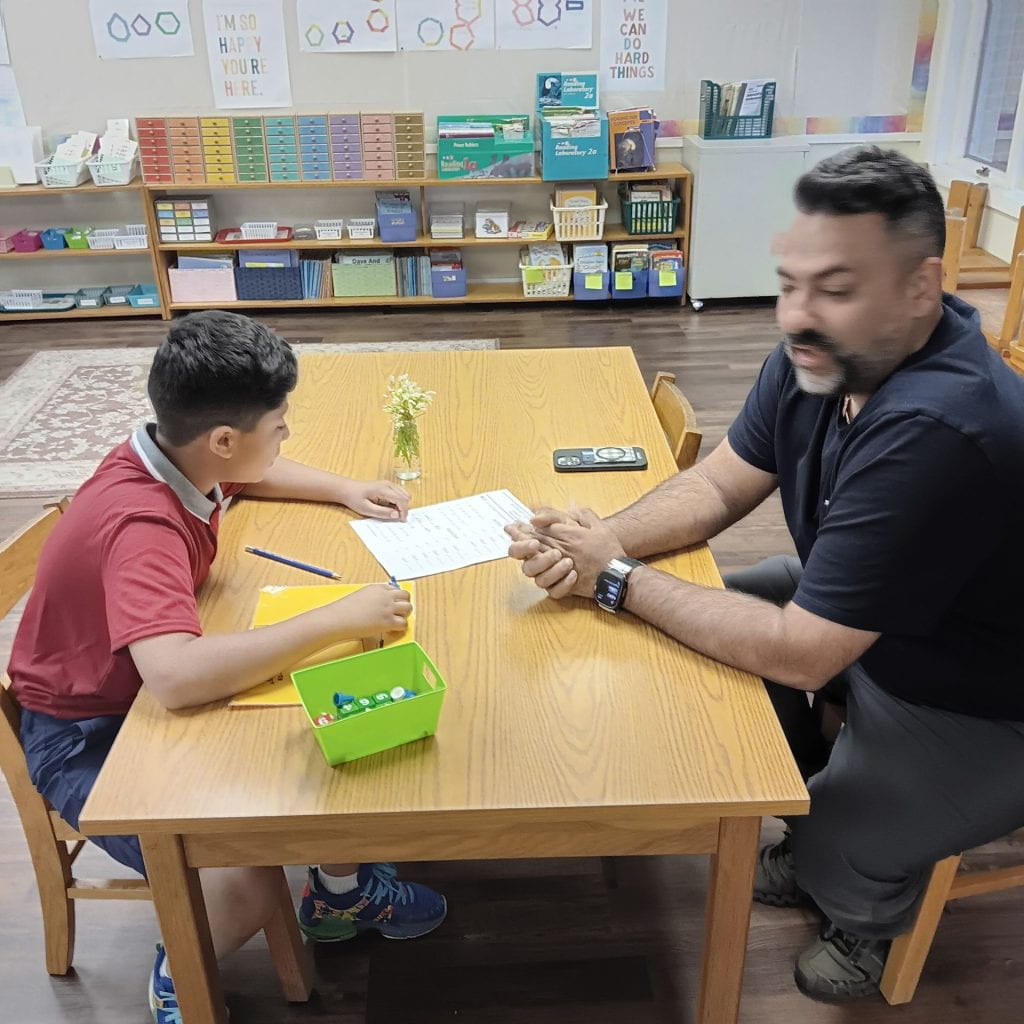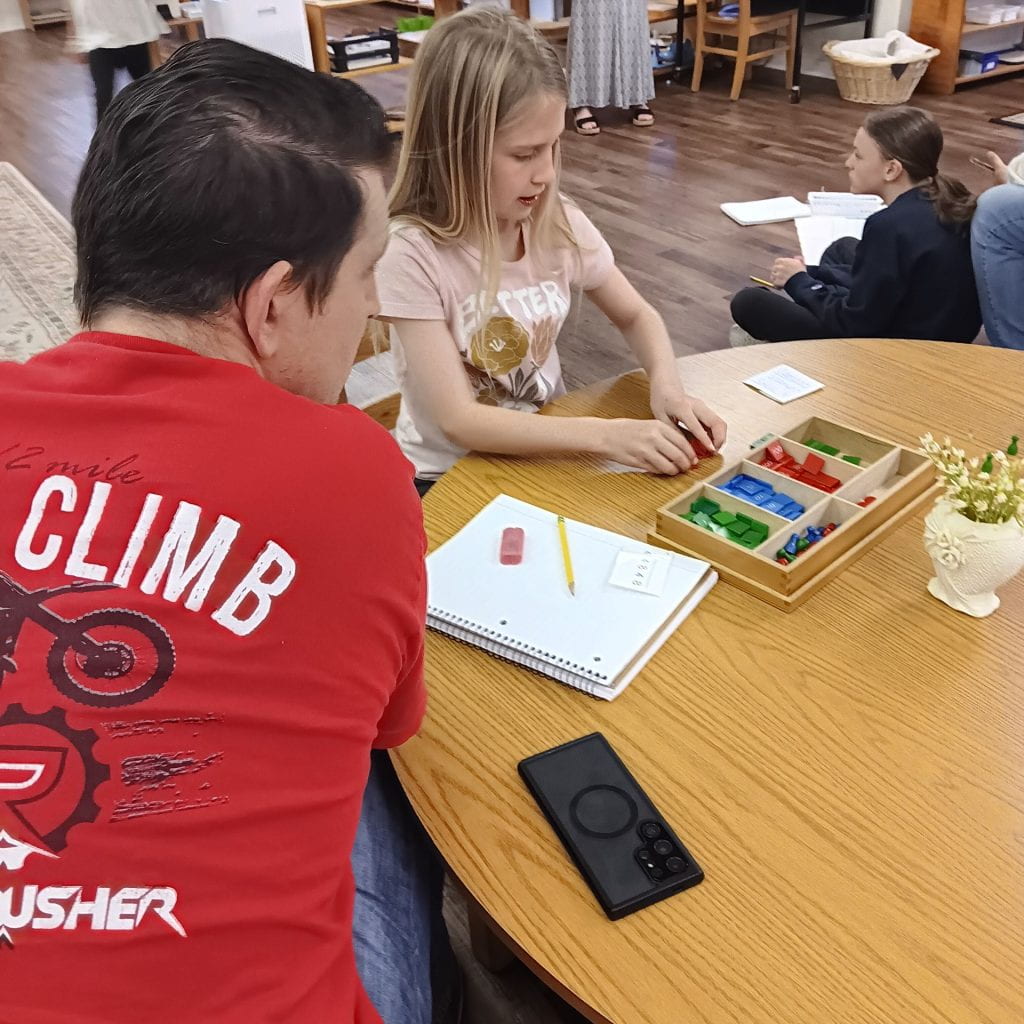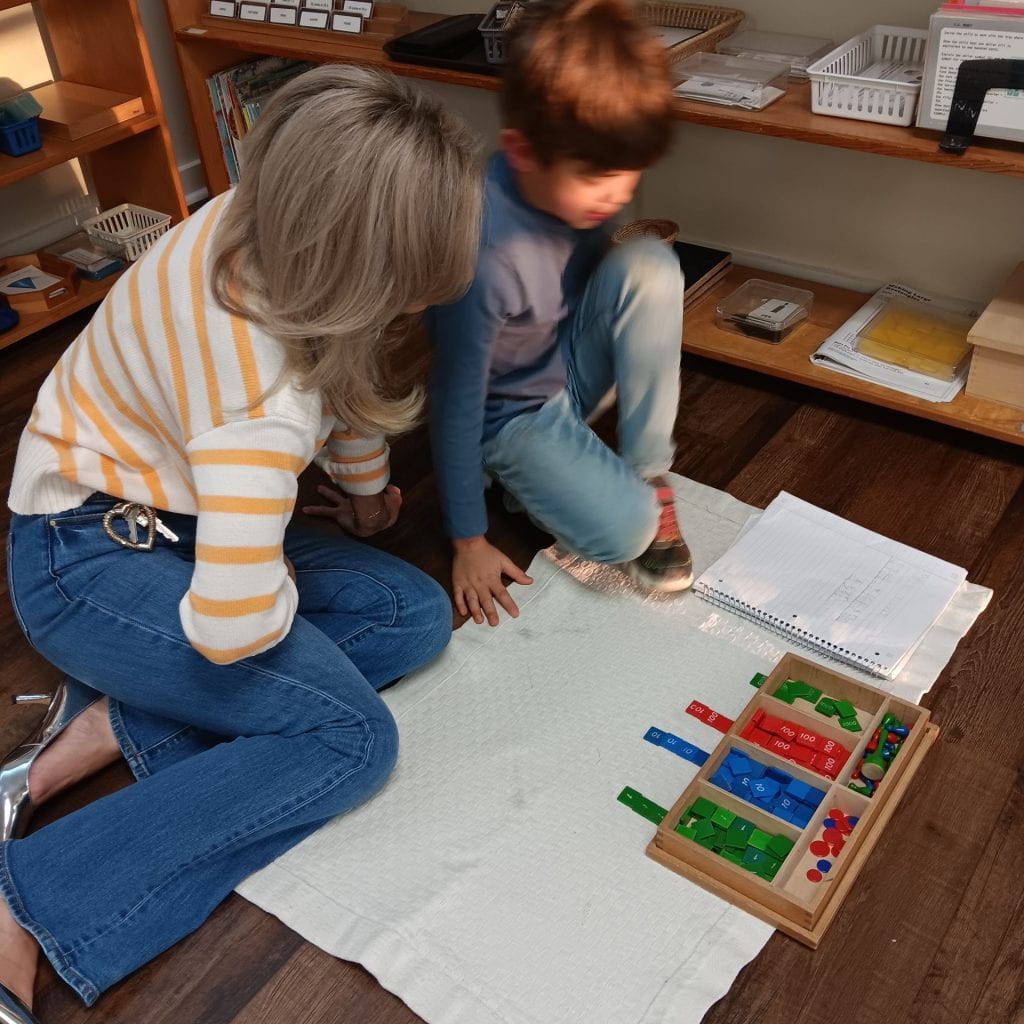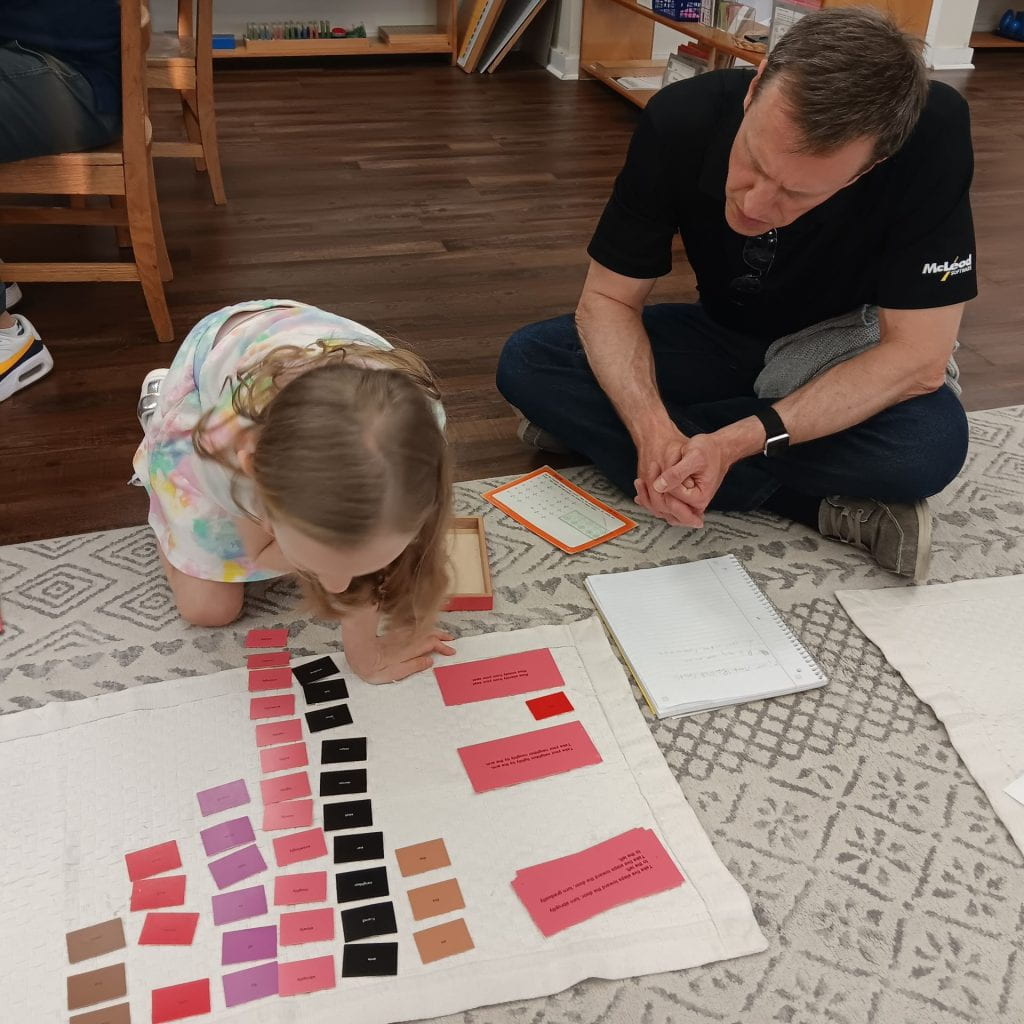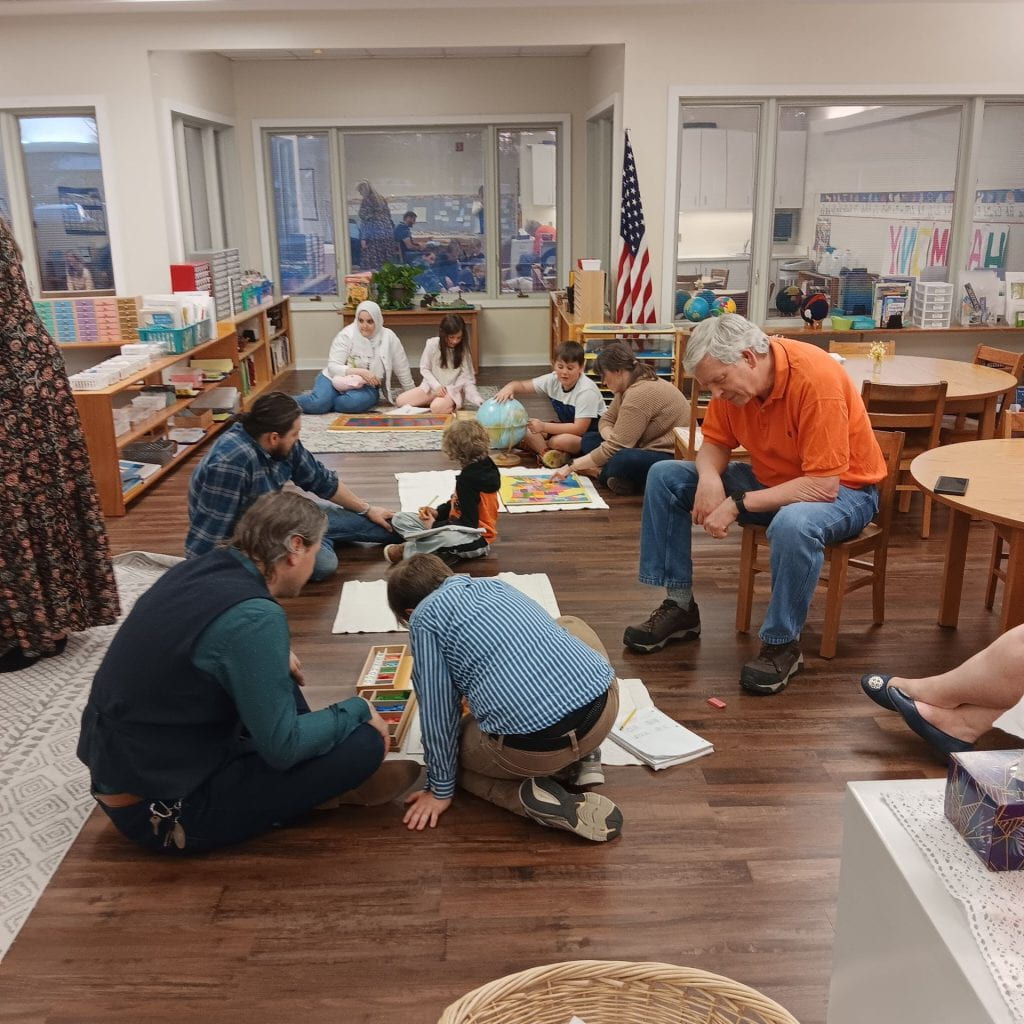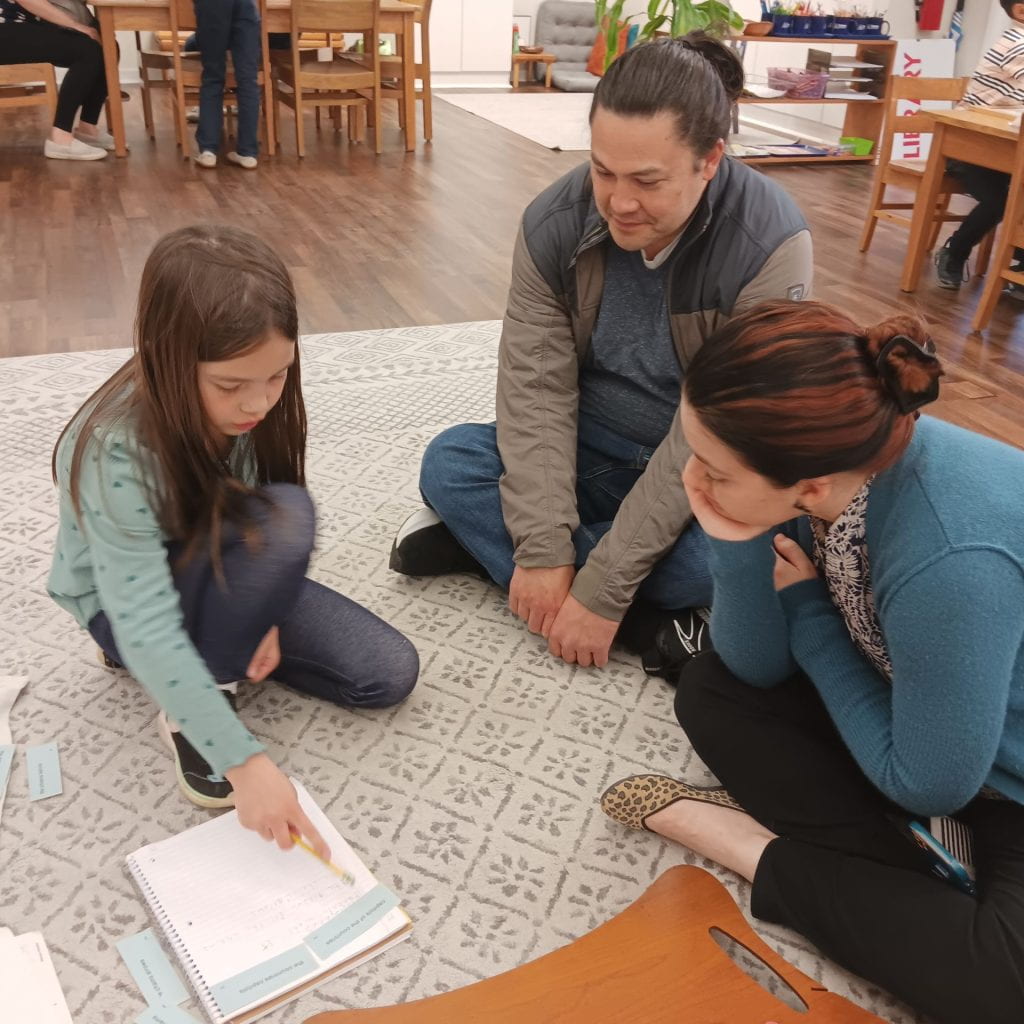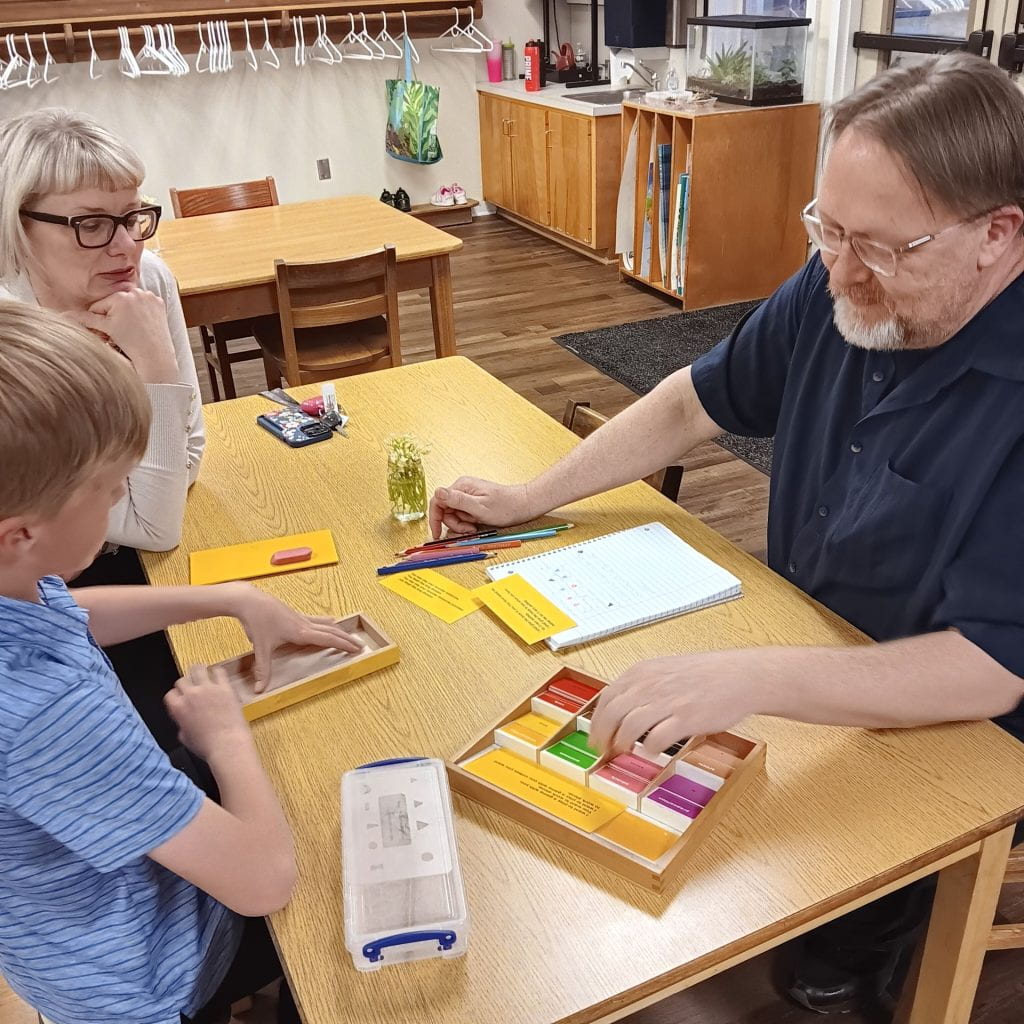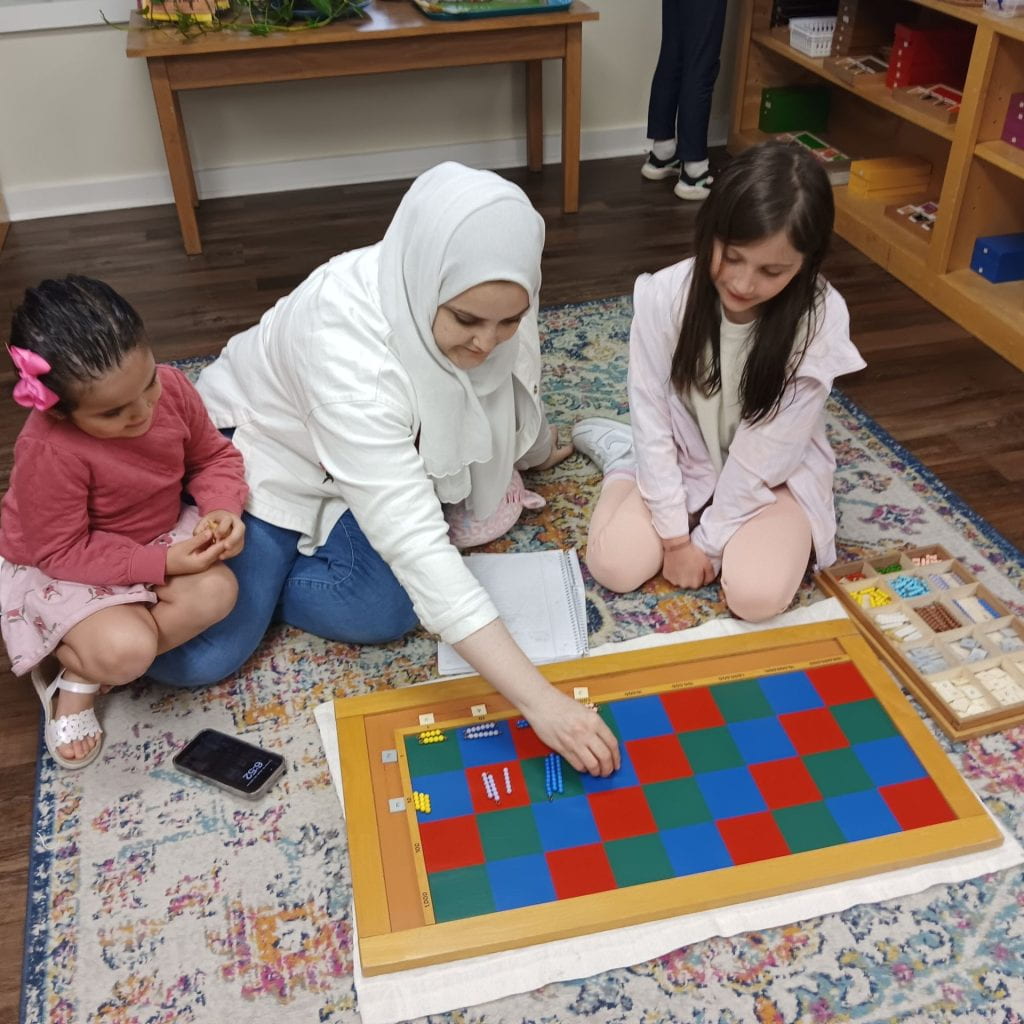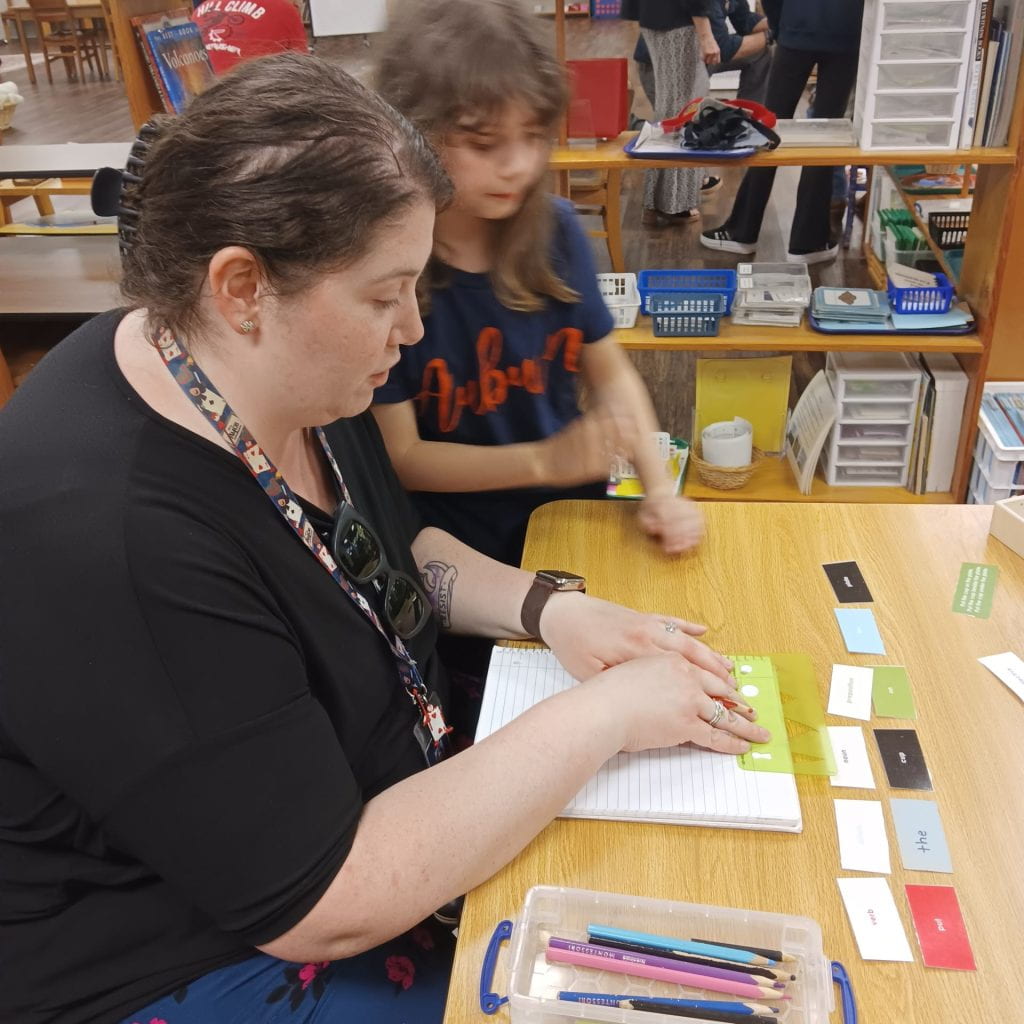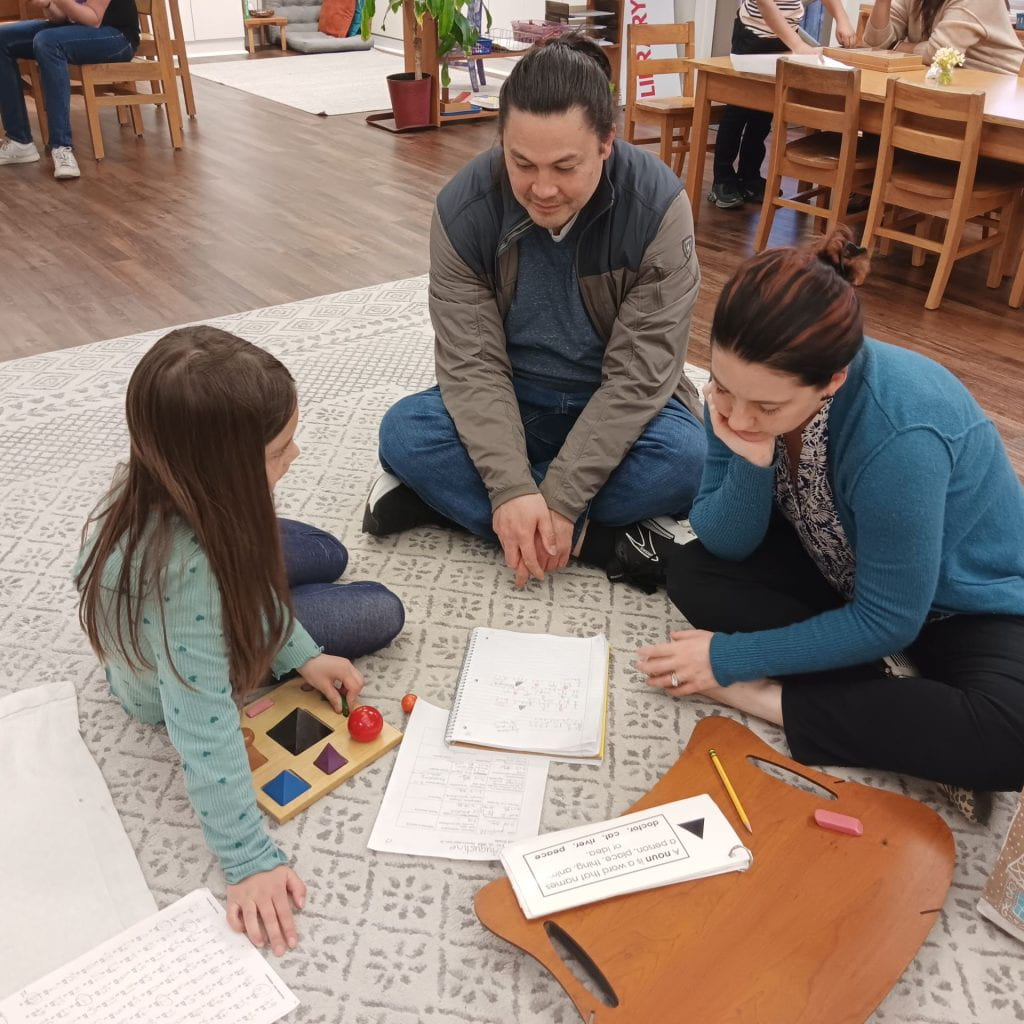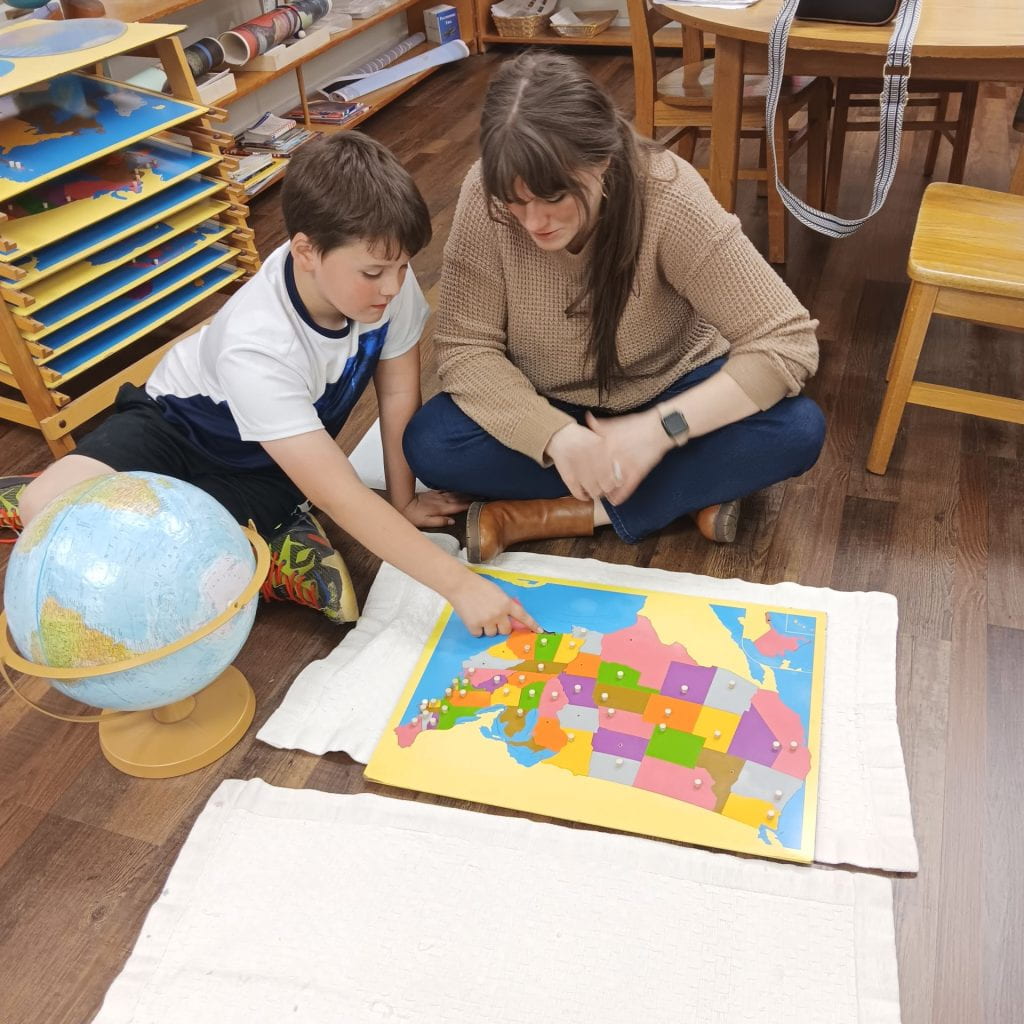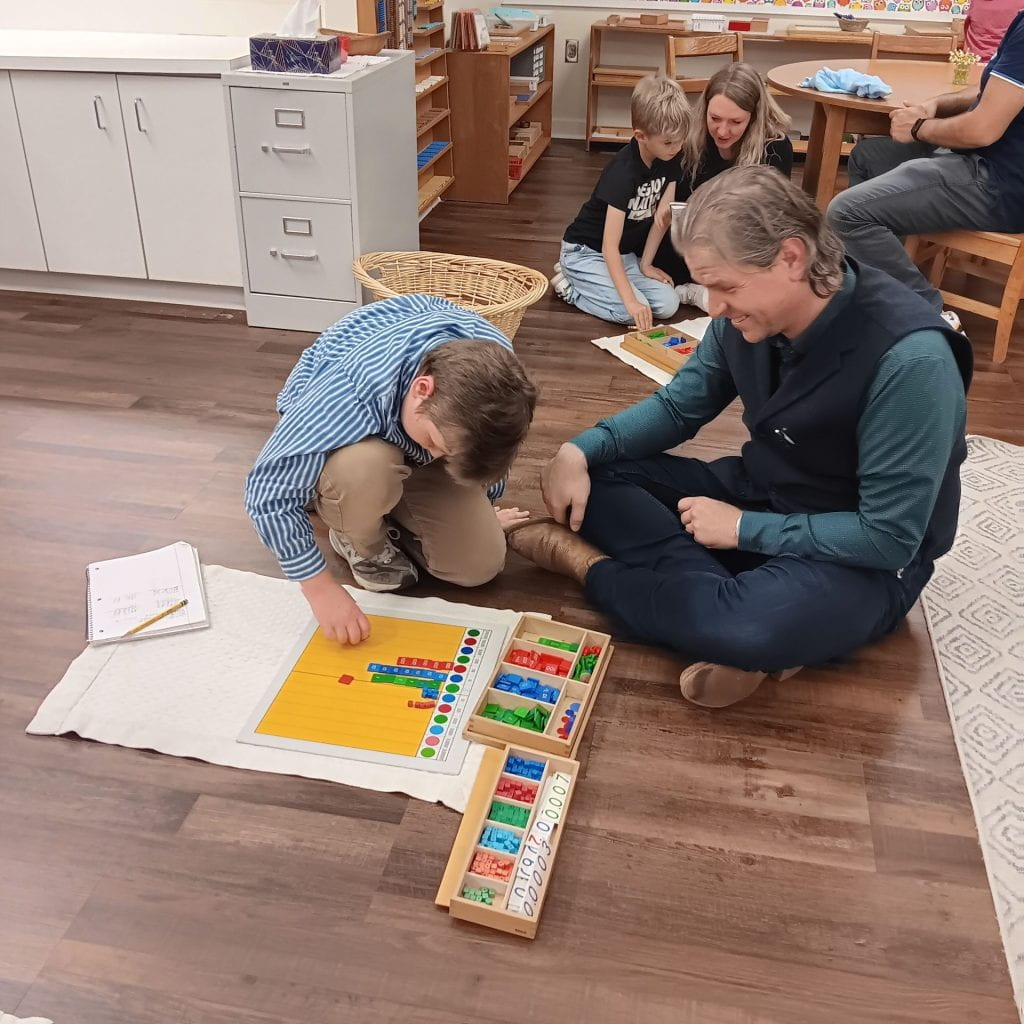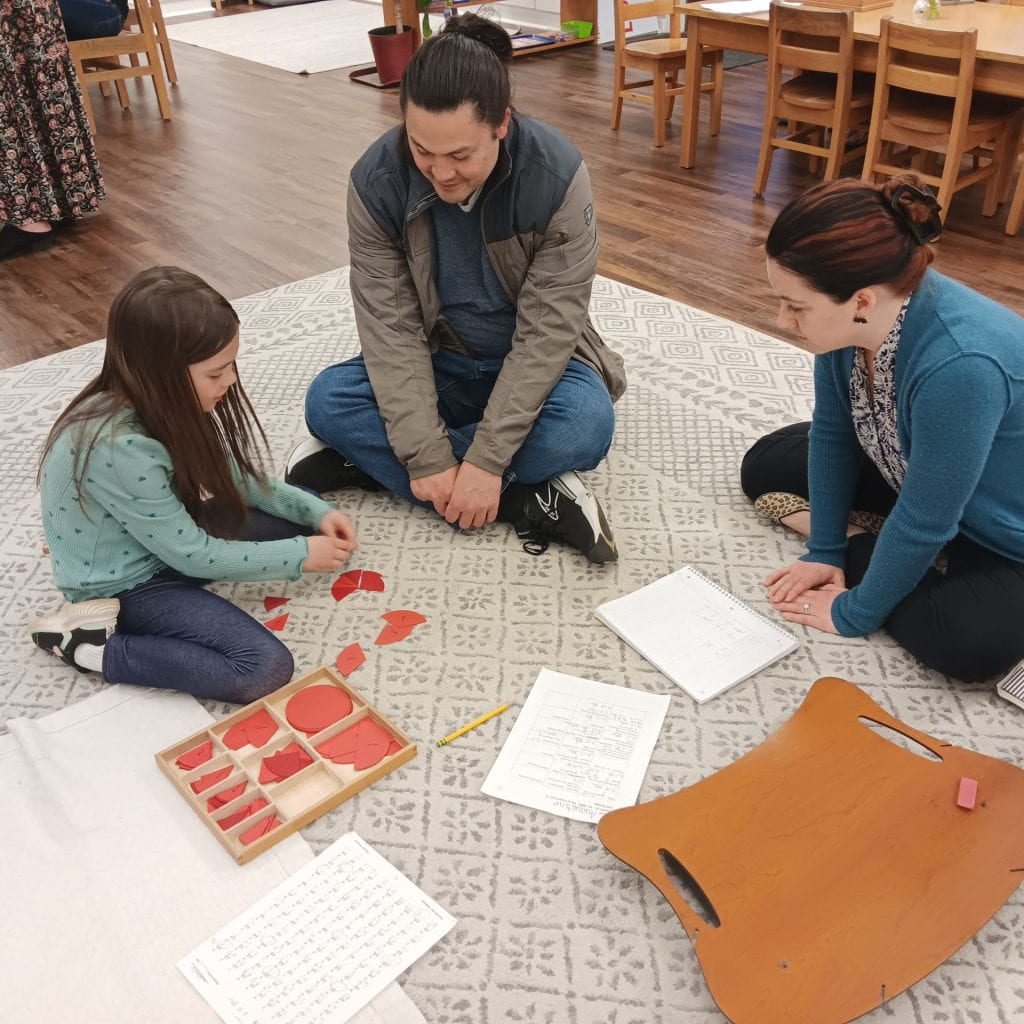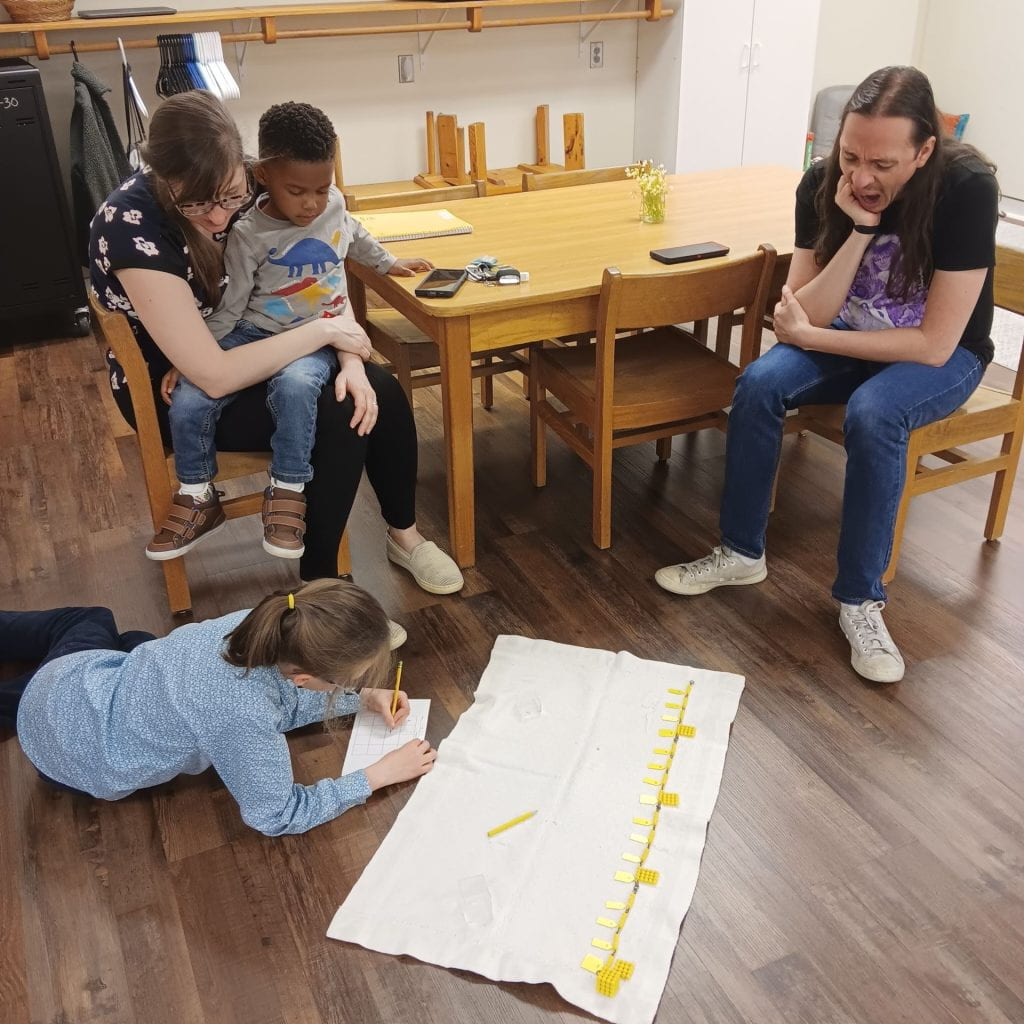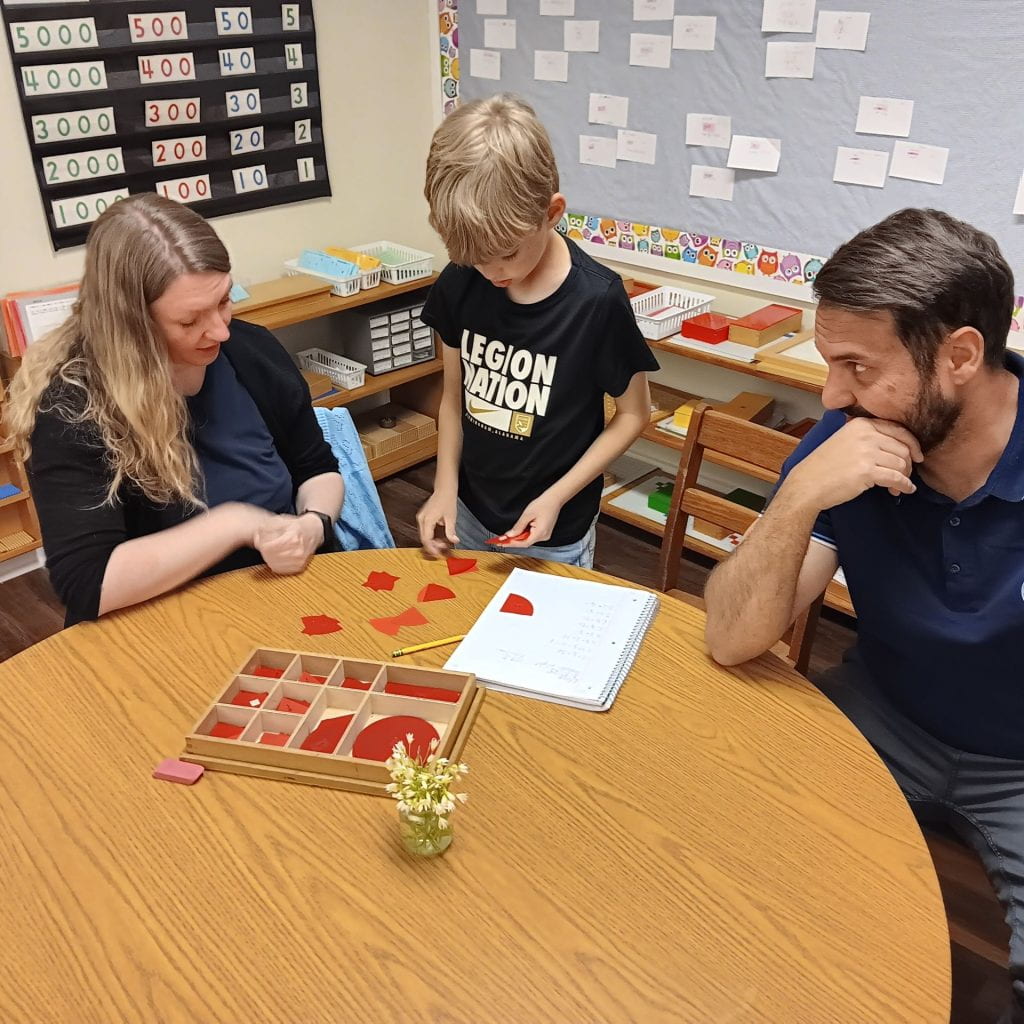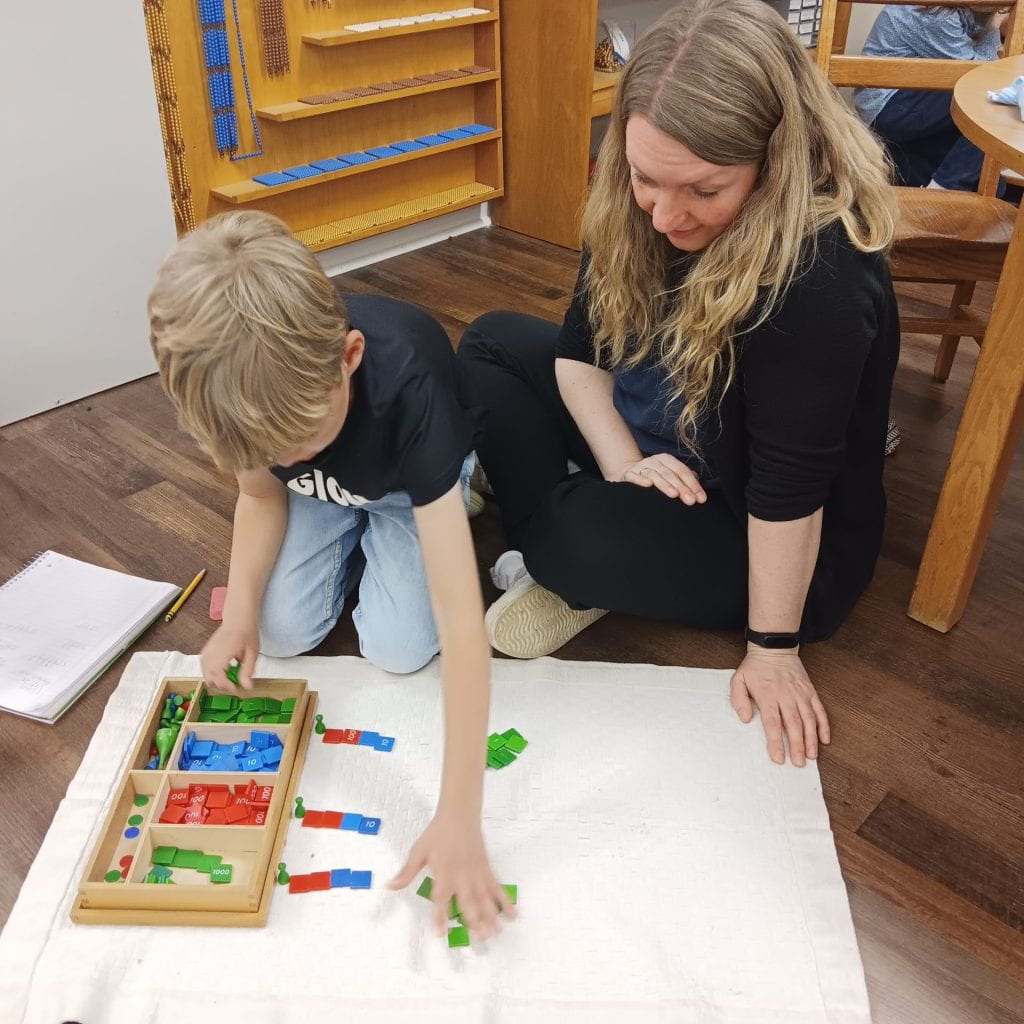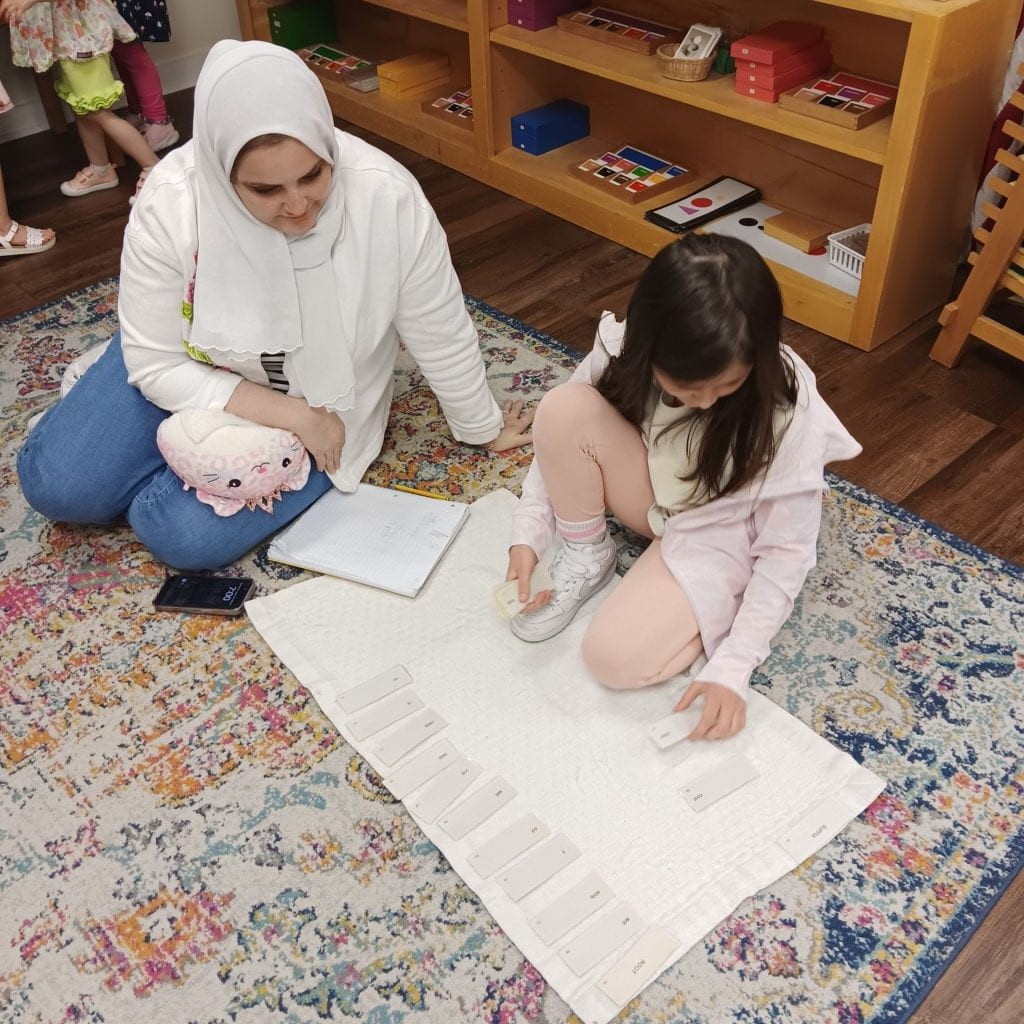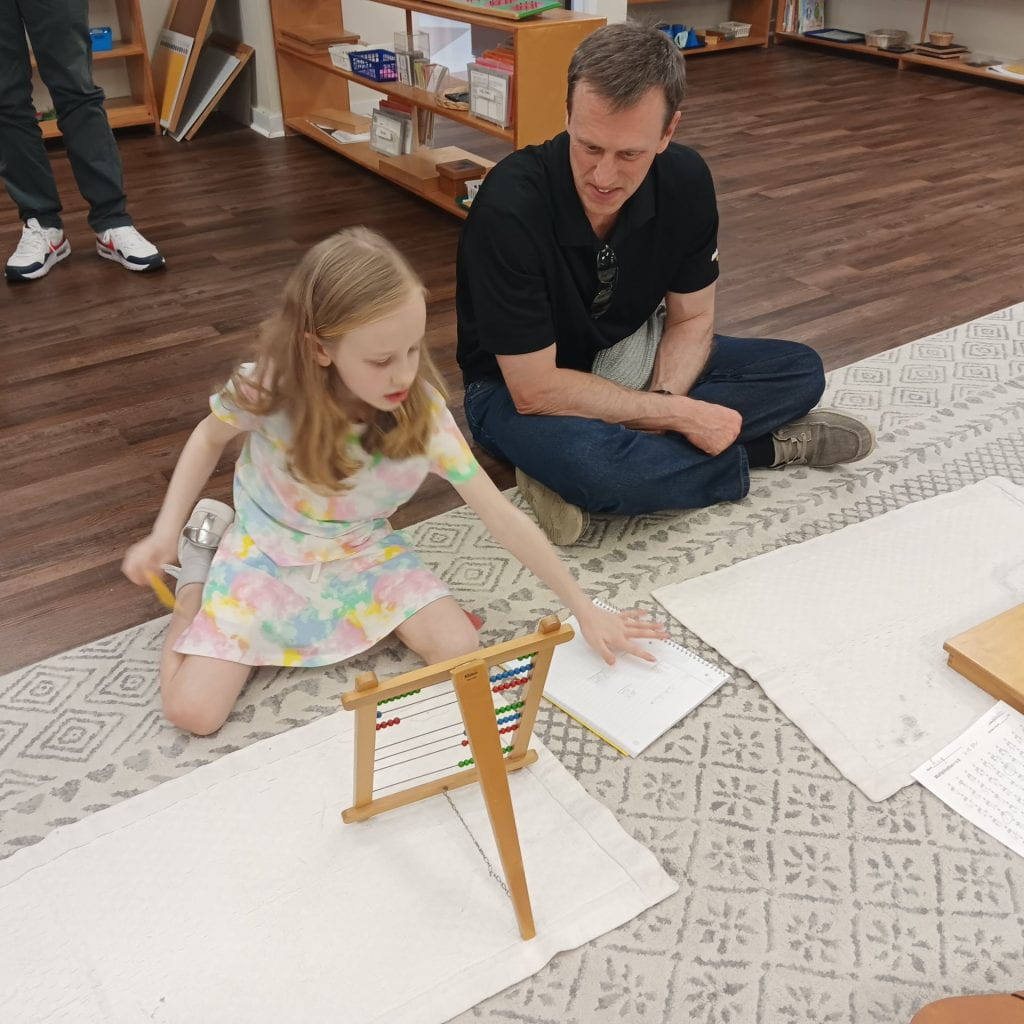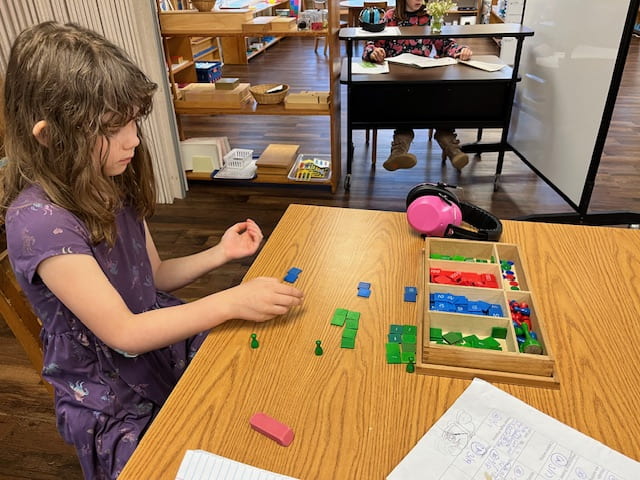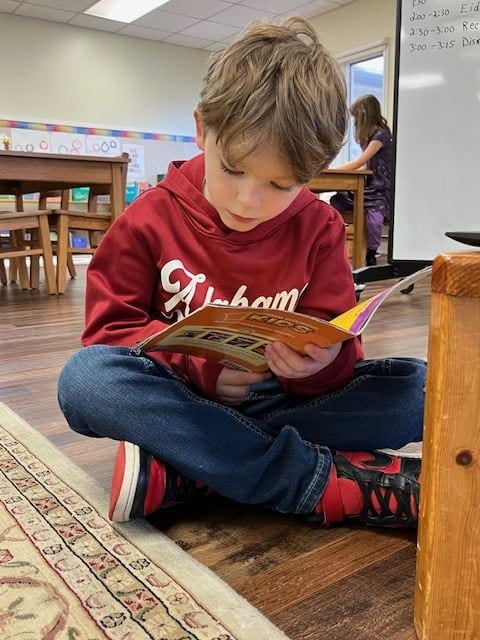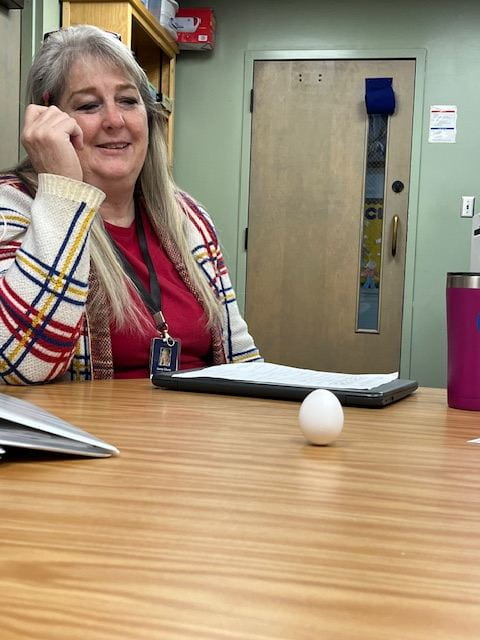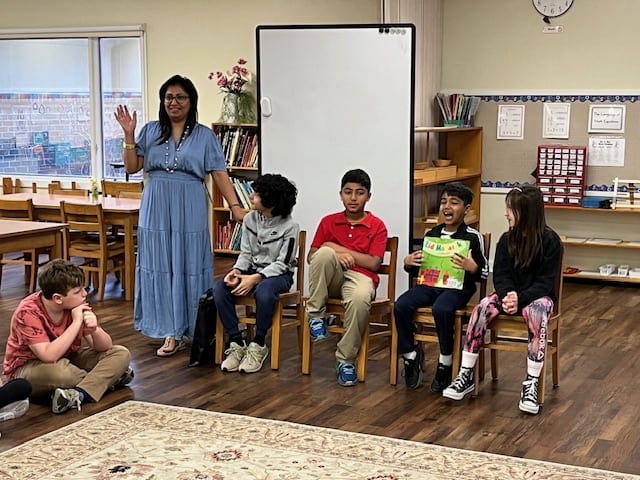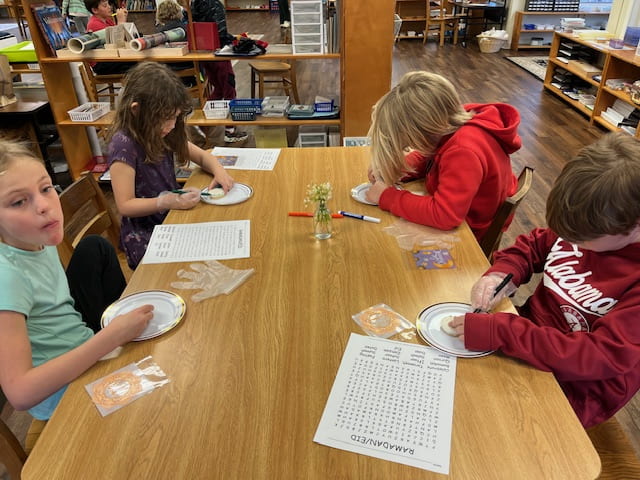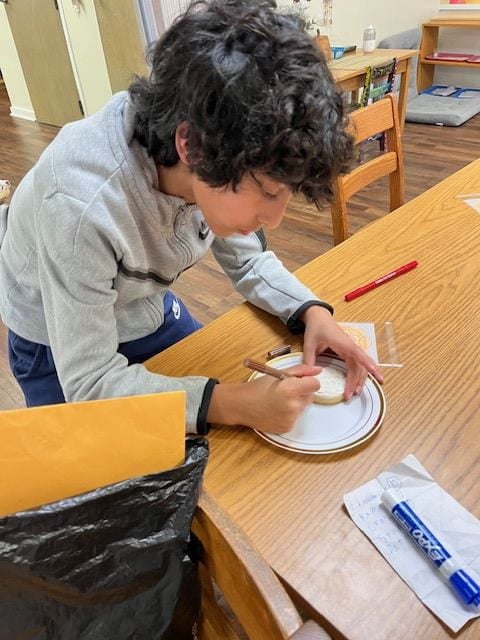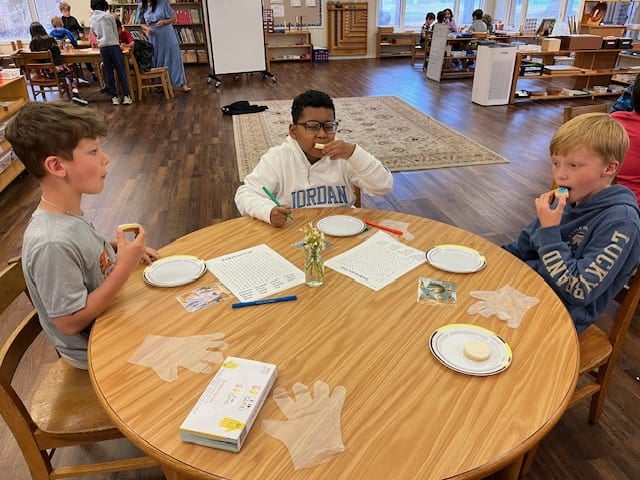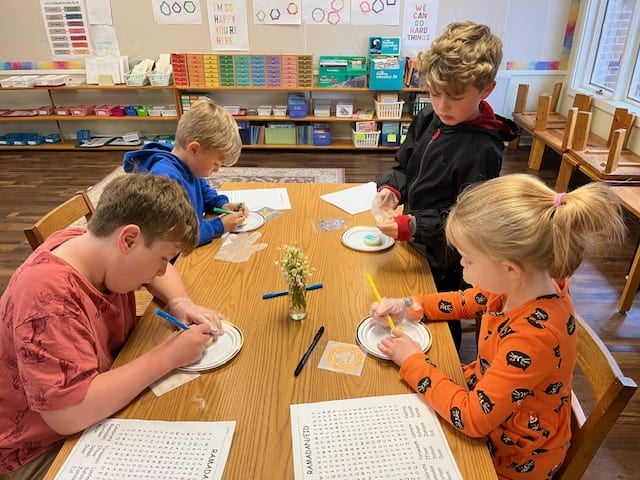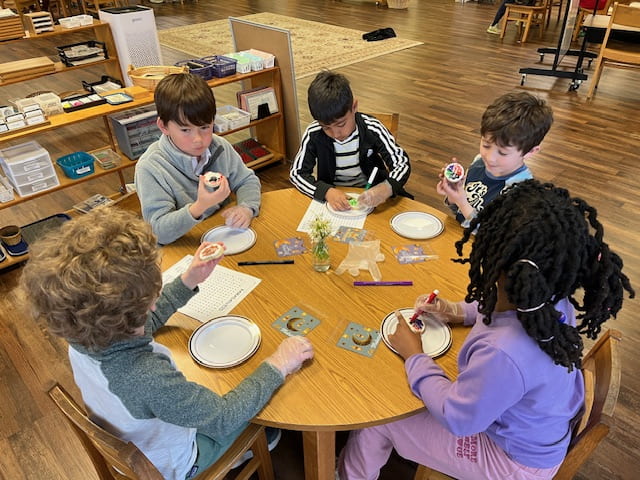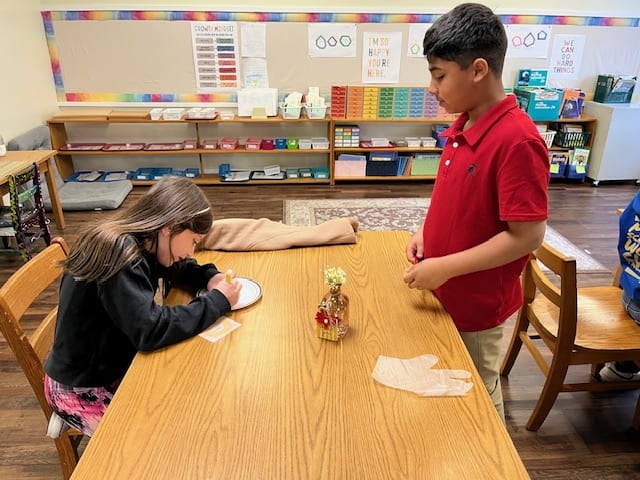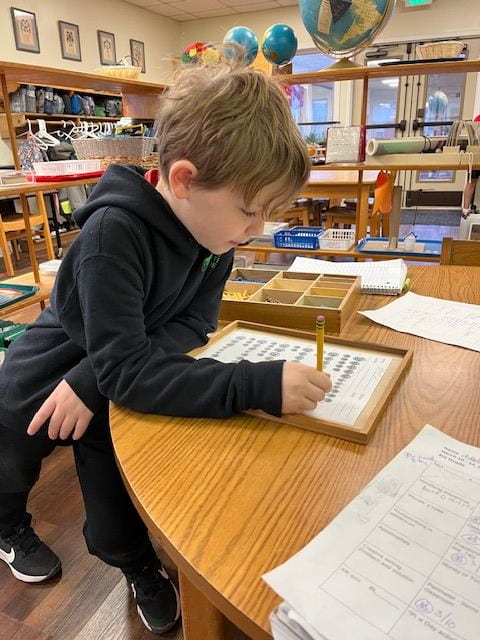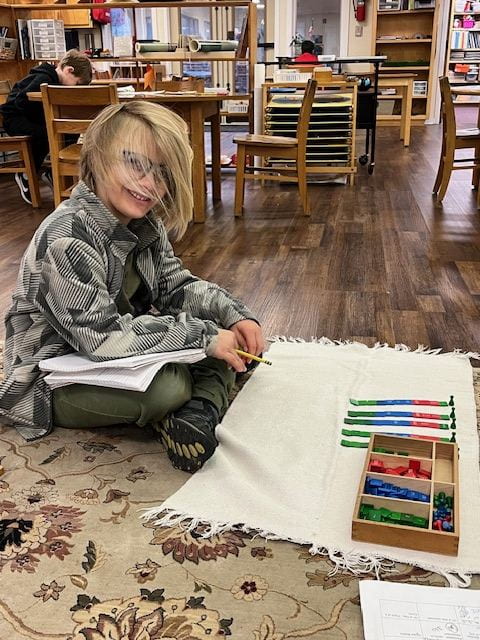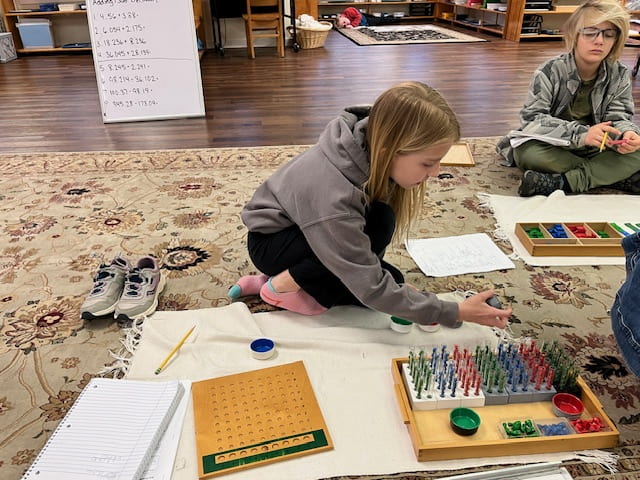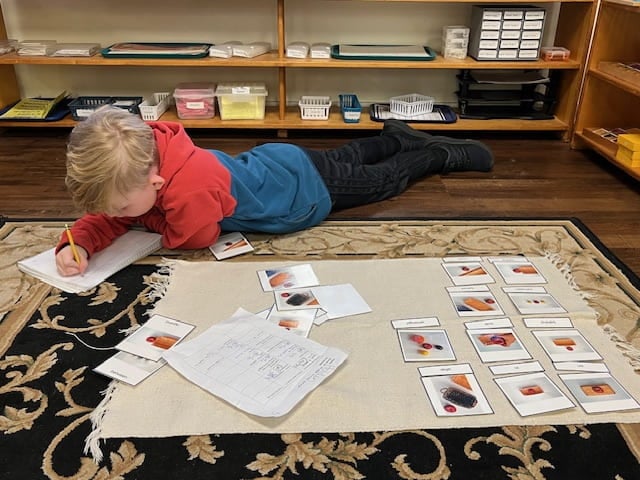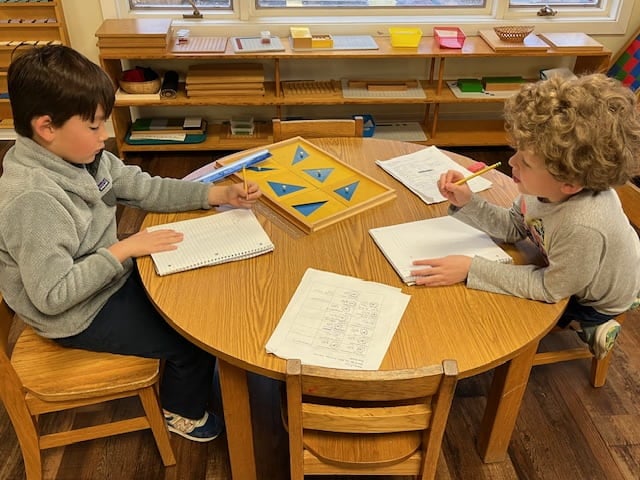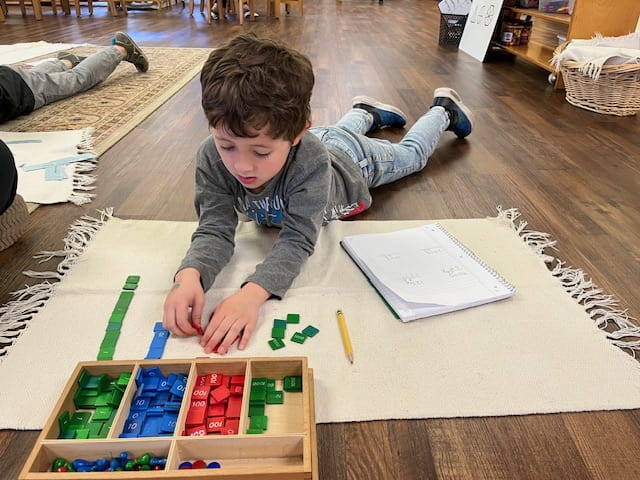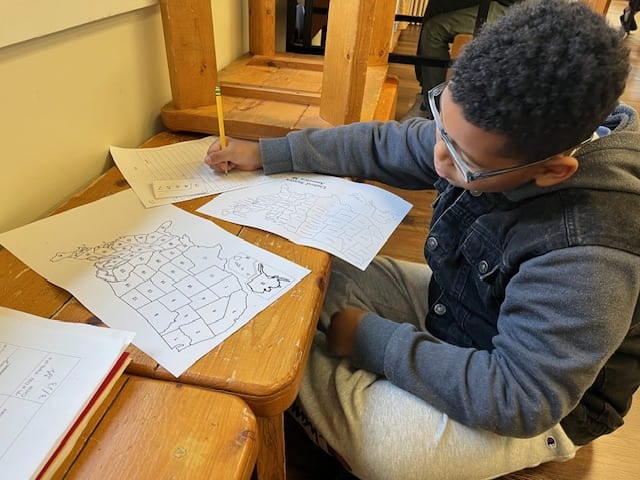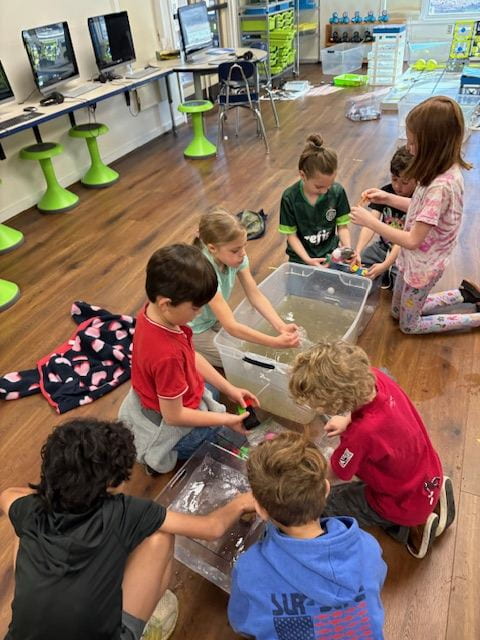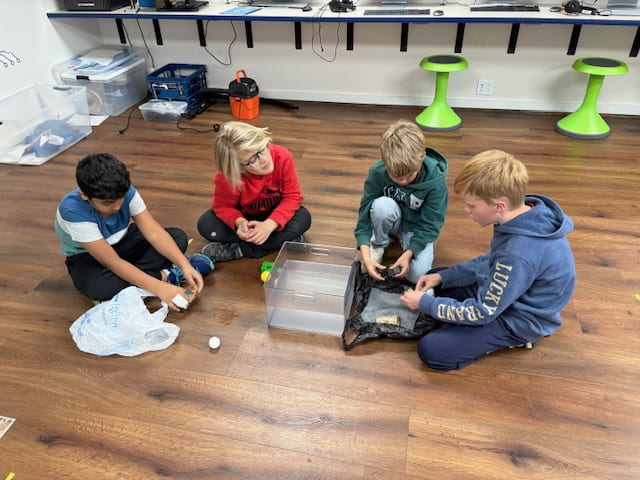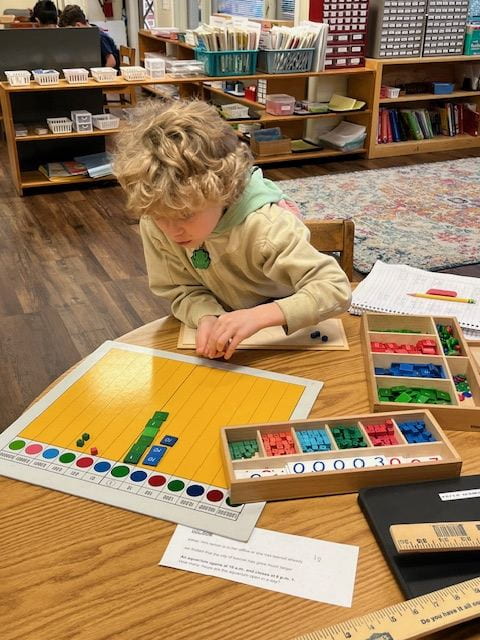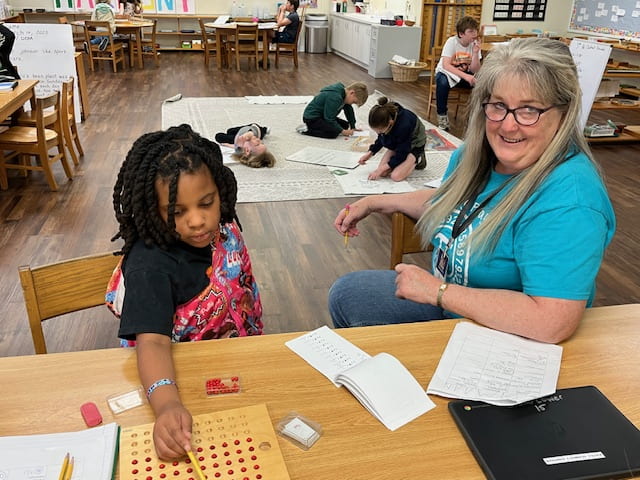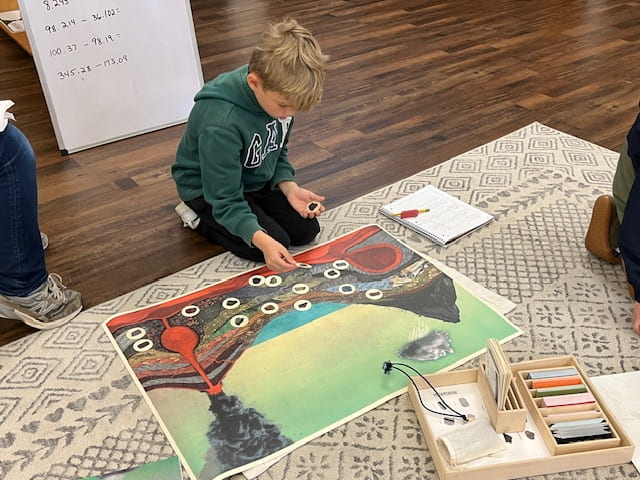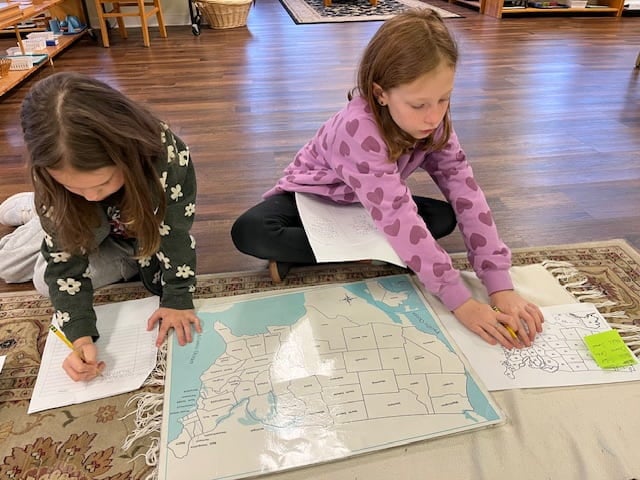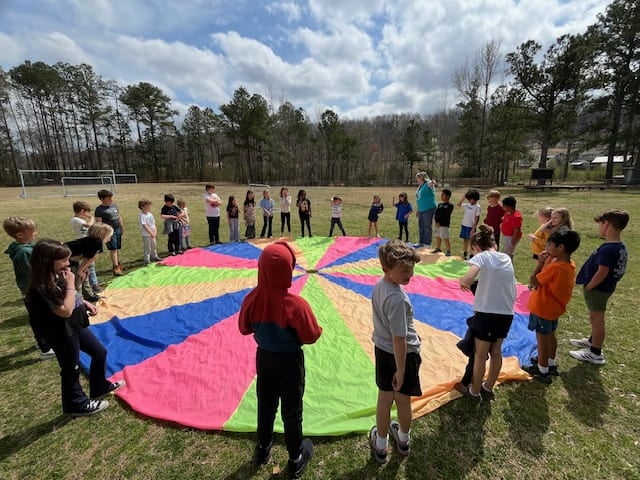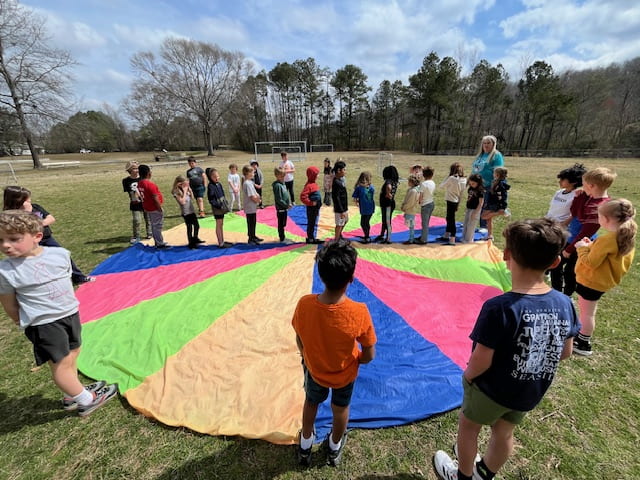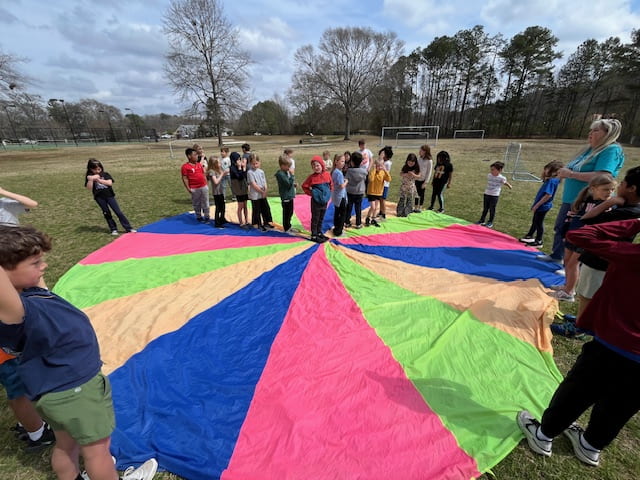The Montessori approach to education places an emphasis on educating the whole child. This includes social-emotional learning such as conflict resolution skills, social etiquette, and interpersonal skills that build healthy relationships with peers and adults. When parents continue this same approach in the home environment, it benefits the child’s social-emotional development. The book How to Talk so Kids Will Listen & Listen so Kids Will Talk by Adele Faber and Elaine Mazlish has useful advice for parents in helping children grow their interpersonal skills.
Learn to Look & Listen: We often jump to conclusions and step in without taking into account what our child might be doing, thinking, or feeling. Put down the phone, turn off the television, watch, and look into your child’s eyes when you speak.
- Practice observing and staying quiet first.
- Listen to yourself as well as your child—if your immediate inclination is dismay or anger, write down what you would like to say, but don’t say it.
- Try not to fix anything or problem-solve—just be with your child.
Name the Feelings: It’s easy to be anxious when your child is upset. As a result, we may minimize children’s feelings or attempt to protect them from disappointment. In the long run, it is more productive to help children identify and learn from their emotions. Just as Montessori materials help children learn concepts and nomenclature, thoughts and feelings can be defined for our children. Adapt the style or phrasing to suit your child’s age.
- Listen to your child as he or she talks, offering feedback such as: “Oh…”; “Mmm…”; “I see.”
- Recognize and name your child’s feelings: “You seem upset (or angry, or happy).…”
- Resist asking and then answering questions that are rhetorical or accusatory: “What were you thinking?” “Who drank the milk?” “How many times have I told you…?”
- Try to understand from your child’s perspective and describe, perhaps with fantasy: “Sounds like you wish you could eat cookies for every meal.”
- Show respect for your child’s struggle: “I see that it’s hard for you to…”
- Describe the dilemma your child is facing: “Even though you know…” “The problem is…”
Engage Cooperation: Keeping the family on schedule—and making certain everyone is fed, clothed, bathed, etc.—is no easy task, especially as children often have timetables, needs, and desires different from adults (and often from each other). Dr. Montessori believed that children, when given tasks appropriate to their abilities, delight in their accomplishments. Organize your home so children needn’t rely on adults for everything, and give them the time and the direction they need so they can become independent and successful in contributing to the family. You may find you don’t have to resort to demands or reprimands.
- Acknowledge feelings first: “You’re cozy in your bed this morning.”
- Offer a choice: “Do you want to wear the red shirt or the green shirt?”
- Be playful: “If you were a magician, you would already be dressed!”
- Rather than reminding, describe what you see: “This table needs to be set.”
- Say it with information: Use a word or short description, rather than a nagging, repetitive demand: “Shoes, backpack…”
- Write a note: “I’m hungry” on the dog’s collar or “Hang me up!” on the jacket.
- Take action without insulting: “Let’s clean up, put the paints away, and go outside.”
Faber, A. & Mazlish, E. (1982.) How to talk so kids will listen and listen so kids will talk. New York, NY: Avon Books.
Last week in the classroom:
1st grade: Students learned the spelling rule for plurals of words ending in f and fe, identified prepositions in sentences, performed addition by changing only the tens place in 3-digit numbers, practiced static subtraction, and reduced fractions to lowest terms.
2nd grade: Students wrote plural forms of words that have irregular plurals such as mice to mouse, identified pronouns in sentences, performed addition and subtraction with an isolated place value, practiced dynamic subtraction, and added and subtracted mixed numbers.
3rd grade: Students learned the forms of advanced irregular plurals such as fungus to fungi and funguses, identified conjunctions in sentences, changed fractions to decimal numbers, practiced mixed operations, found least common multiples using the pegboard material, and learned to estimate capacity measurements using the metric system. All students practiced dividing words into syllables, had lessons on lines of symmetry, performed more research on marine animals to discover which layer of the ocean is home for each animal, and discovered more peacemakers who made a difference in our world.
Lower elementary students appreciated presentations of countries around the world from the upper elementary students. It was evident the students worked very hard on their boards they displayed and speeches they gave.
While 3rd graders were away at camp, the 1st and 2nd graders worked hard on writing paragraphs and drawing portraits to describe each 3rd grade student.
Third grade students had a delightful experience at farm camp! They enjoyed learning to milk a goat, holding piglets, and canoeing in a lake among many other outdoor activities.


